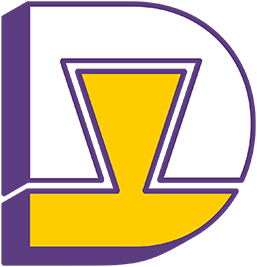Resources Index
-
Shortlist and Pitching Day: Design Ventura 2023-24
We are excited to announce our shortlisted entries for Design Ventura 2023-24.
A warm thank you to all the teachers and students who have worked so hard on this year’s project. We had over 16,000 of you involved, and shortlisting was not an easy task! Another thank you to our shortlisting panel.
After much debate, we have selected our top ten state school entries and top three schools in the International and Independent Category. Please see a full list in alphabetical order below.
All schools that have submitted an entry for Design Ventura have received feedback from our judges and will be sent participation certificates for their students by post – we will send these soon.
The top ten state shortlisted schools took place in a Pitching Event on Tuesday 19 March at Deutsche Bank’s headquarters at Winchester House. The final winner will be announced at the Celebration Day at the Design Museum, in April.
DESIGN VENTURA SHORTLIST 2023-24

Christ the King Voluntary Catholic Academy
Road to Go
A bag with a twist! Intended for families on the go, combining their child’s favourite toys with a versatile backdrop in one easily portable package.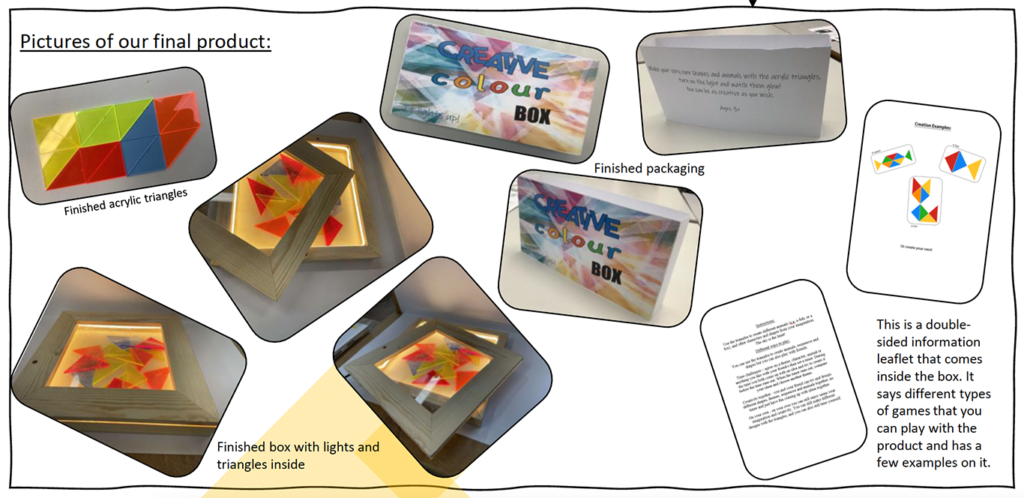
Comberton Village College
The Creative Colour Box
A lamp you can make your own, offering you prompts and colourful triangles to create shapes and animals and watch them light up.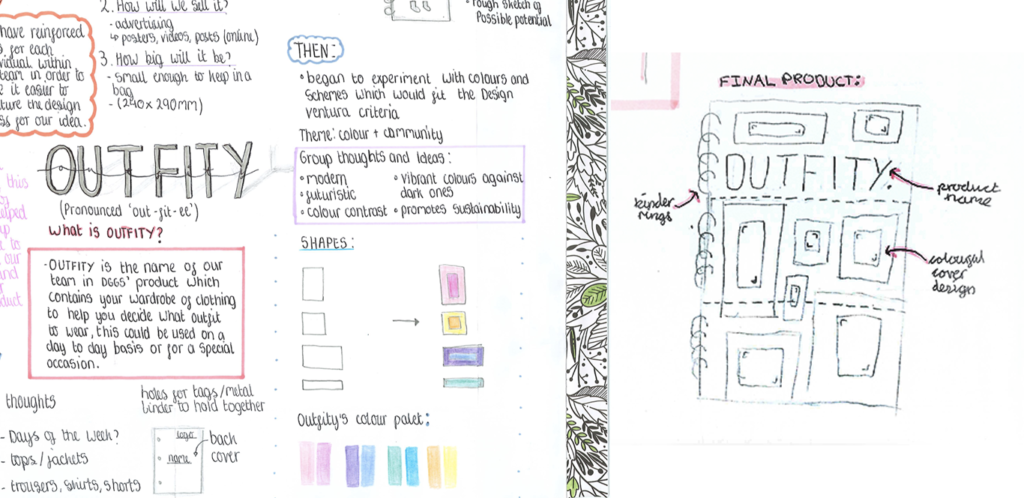
Dover Grammar School
OUTFITY
A tool to help you simplify your wardrobe and decide what outfit to wear, whether it’s day-to-day or a special occasion.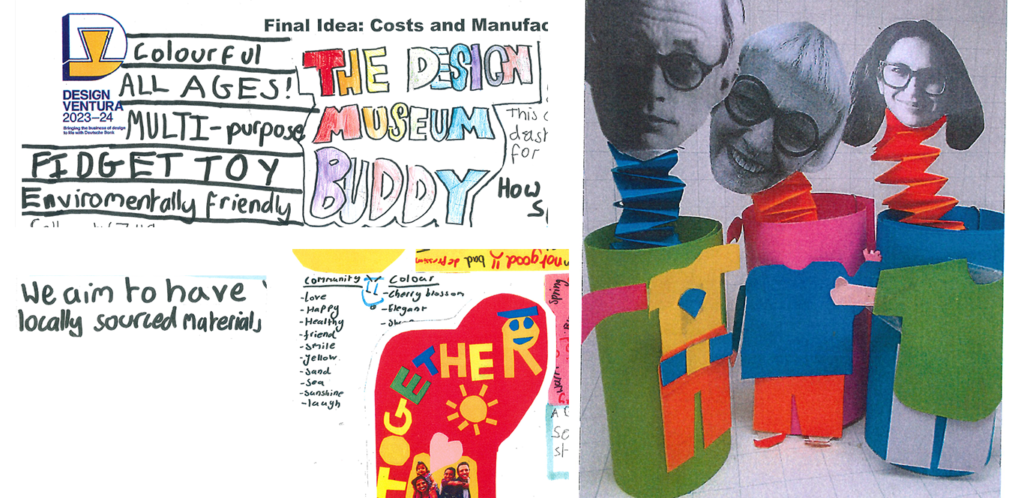
Ferndown Upper School
Bouncy Buddies
Fun, colourful, and of course bouncy collectible figures of your favourite designers, to show off on your desk or in your car. Include facts about design and design history.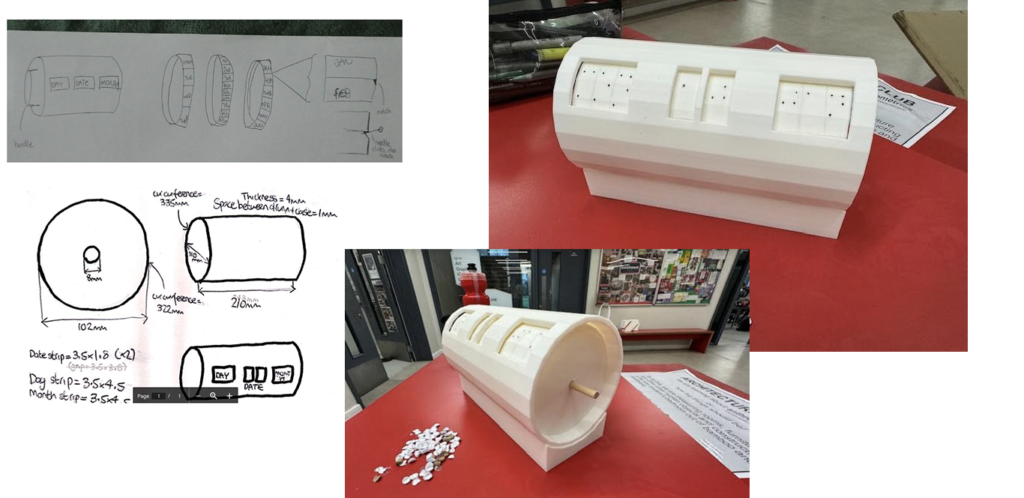
Haggerston School
Braille Calendar
A calendar for visually impaired users, incorporating braille as well as auditory cues such as clicks when you have successfully changed the date.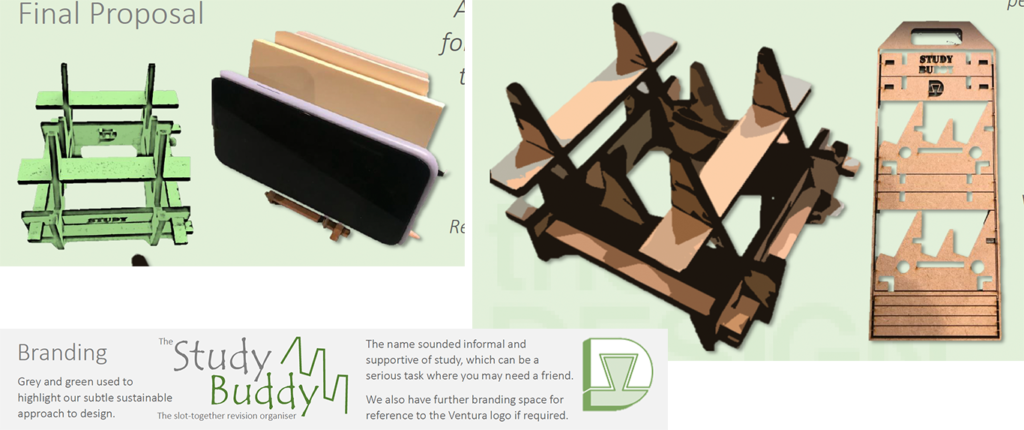
Heathcote School
Study Buddy
A self-assembly, flat-packed revision organiser made from a single sheet of sustainable material.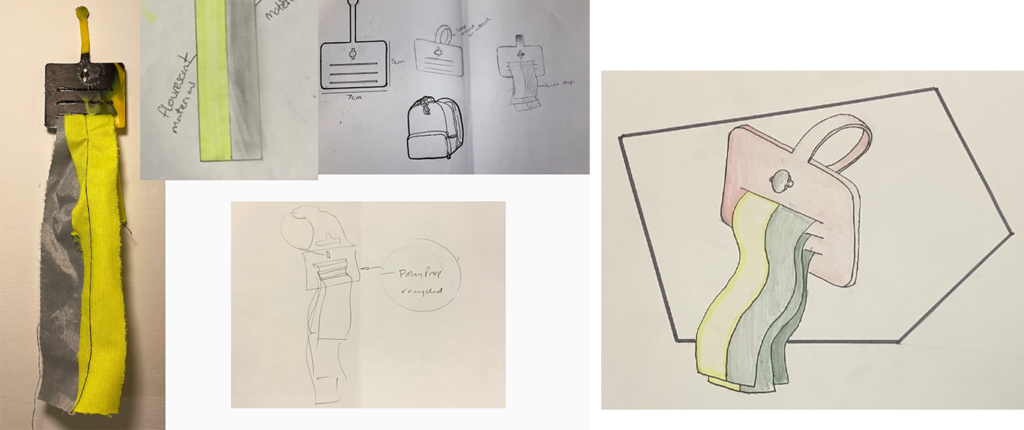
Manor CE Academy
SCRAP
It stands for Safety-Conscious-Reflect-and-Protect! Increase your visibility at night while providing a waste solution for synthetic hi-vis textiles.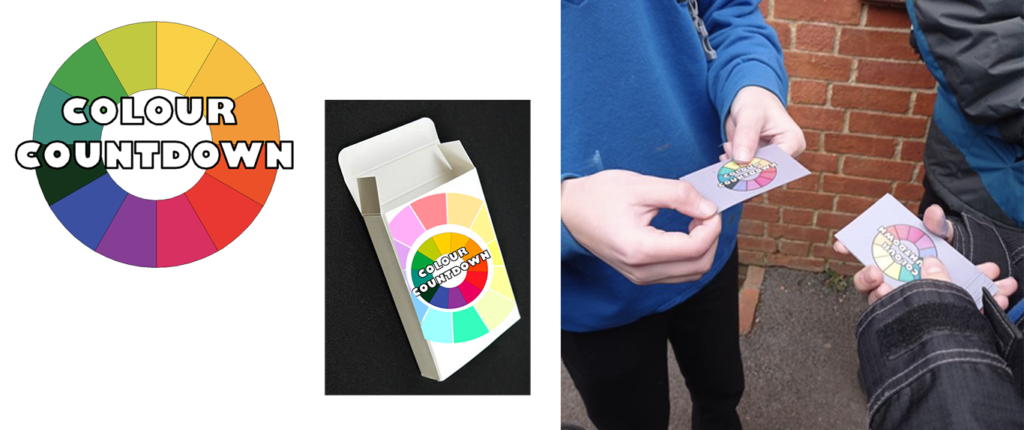
Piggott School
Colour Countdown
A game inspired by I Spy, but based around colours. Race the clock and engage with the environment around you.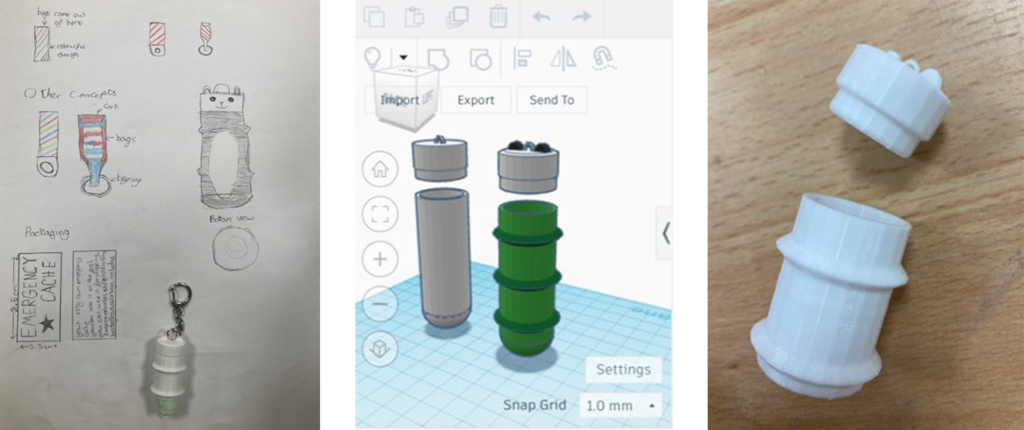
St Joseph’s Catholic High School
Emergency Cache
A compact solution for carrying small necessities on the go: maybe a trolley coin, reusable shopping bag, and some hairpins.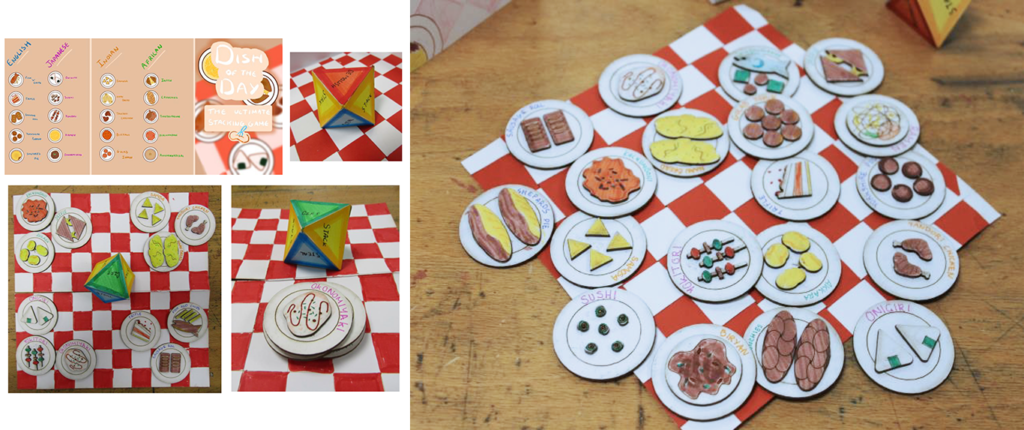
Upper Shirley High School
Dish of the Day
A super-versatile board game focusing on communities in London and the dishes they share.INTERNATIONAL AND INDEPENDENT CATEGORY
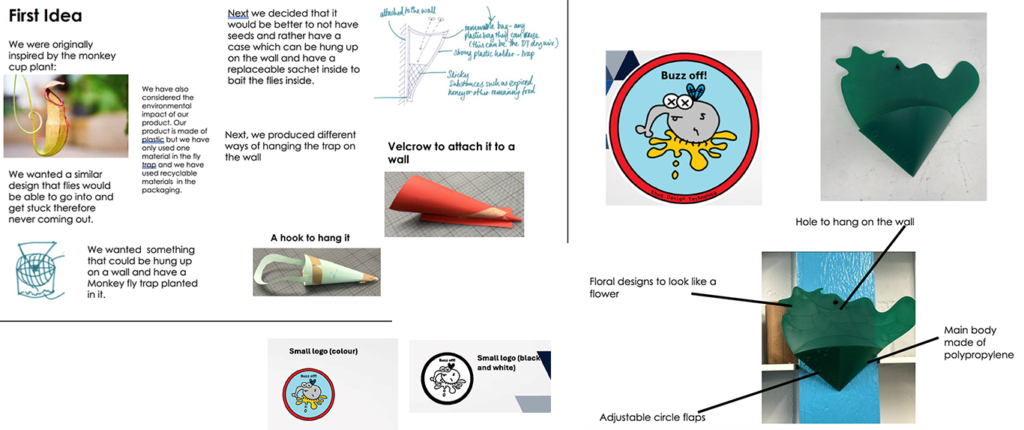
King’s School Canterbury
Buzz Off!
A sustainable, visually appealing fly-removal solution! A biomimicry design based on nature’s own fly-removal solution, the carnivorous plant.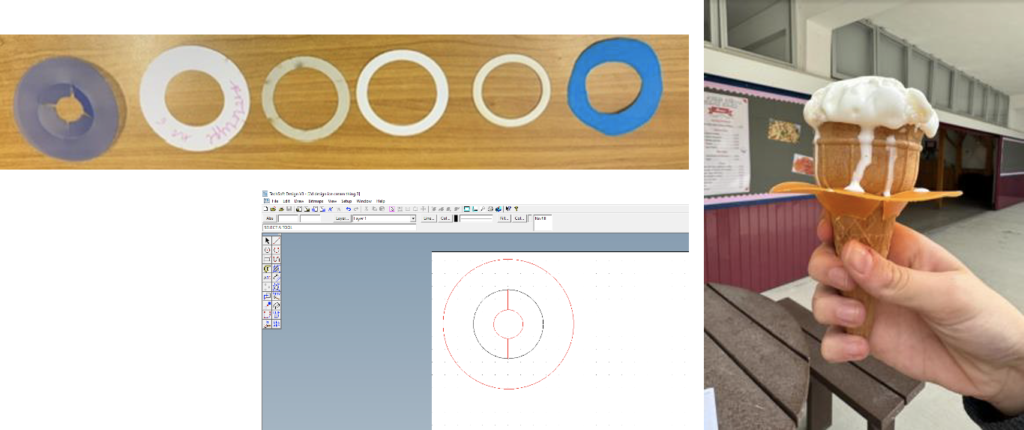
St John’s School
Losing Conetrol
The washable, reusable multi-fit ice cream drip catcher you’ve always wished for.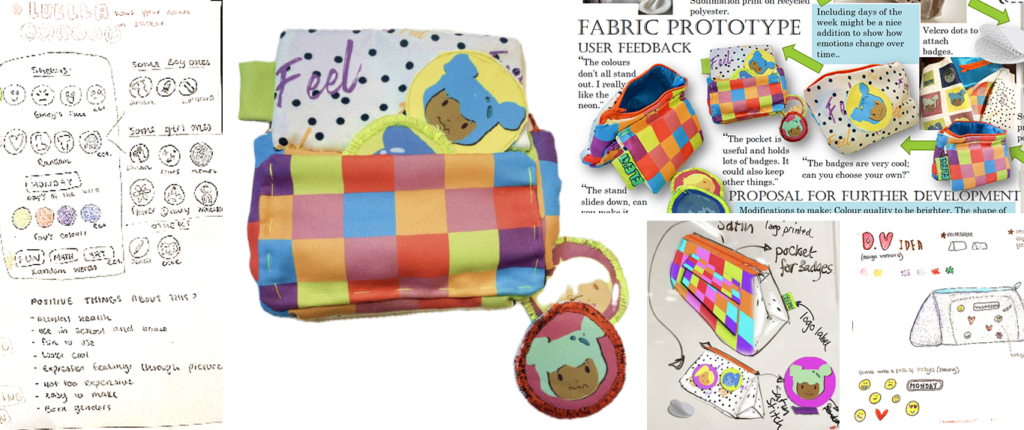
Tudor Hall School
Feel ELEAT
A pencil case to help young people express themselves and their needs, using emojis they can swap out on the outside to let others know how they’re feeling that day. -
Pitching Day: Design Ventura 2022-23
On 22 March 2023, the Design Ventura team welcomed the top ten shortlisted schools to Deutsche Bank HQ, Winchester House, for the 2022-23 Pitching Event. Below is a film of the event:
Each team had a chance to present their product idea and prototypes to our panel of expert judges who were extremely impressed with the professionalism of the students’ three minute pitches.
The judges from left to right: Christoph Woermann, Preena Pate, Sujata Burman, Selasi Setufe and Sebastian Conran.
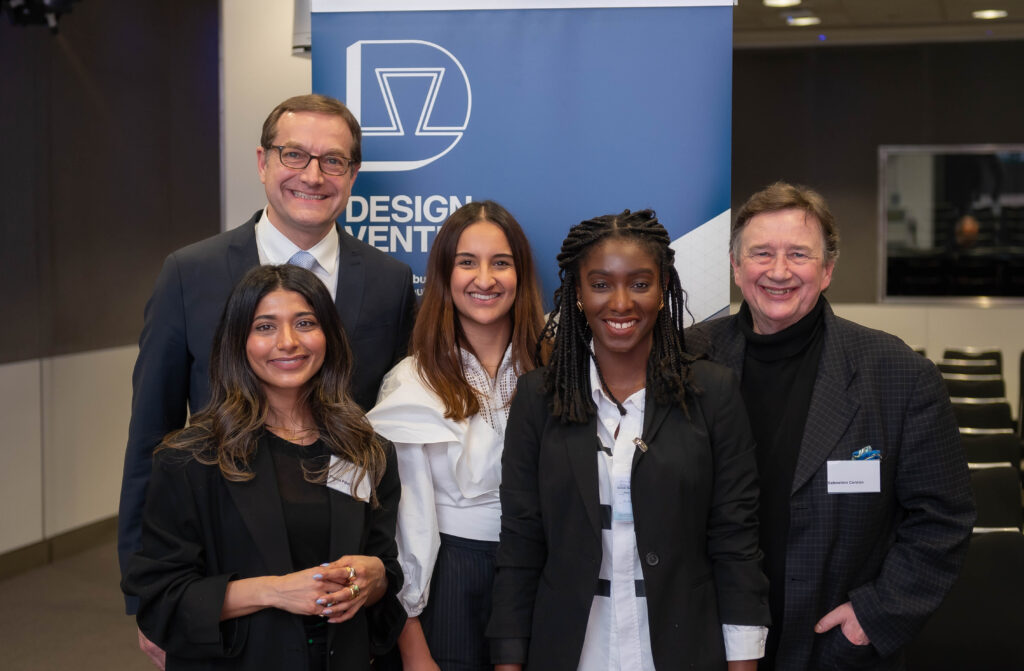
Amy Harris, Head of Corporate Social Responsibility UK at Deutsche Bank, kicked off the event with a very warm welcome to Winchester House.
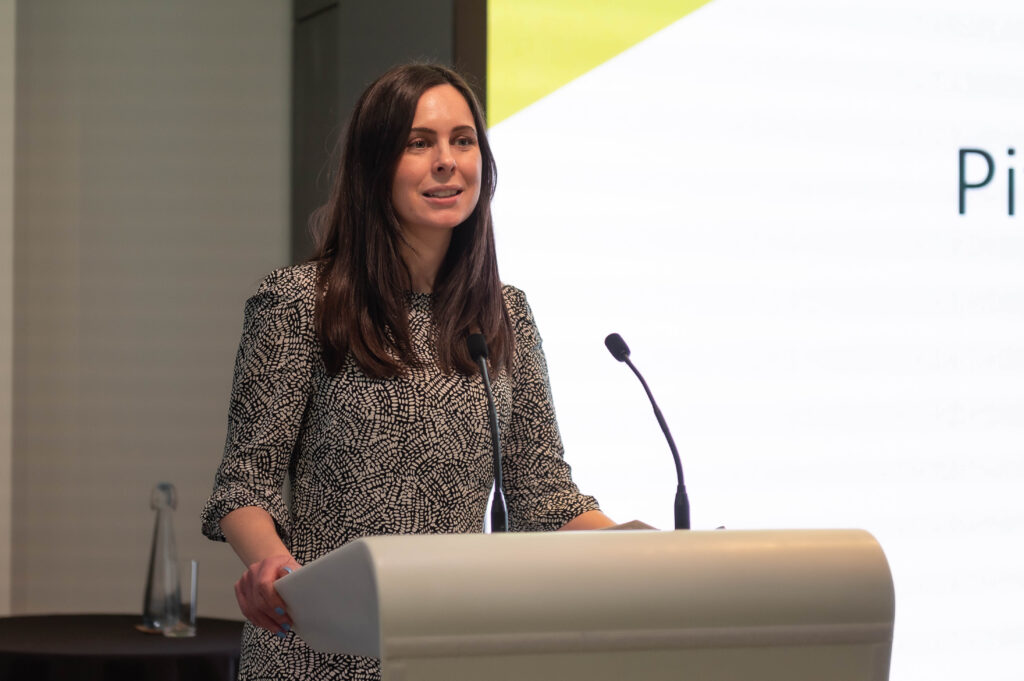
The panel had a fantastic time meeting the students, watching their presentations and questioning them about their product ideas. The students were very well prepared and gave fantastic answers!
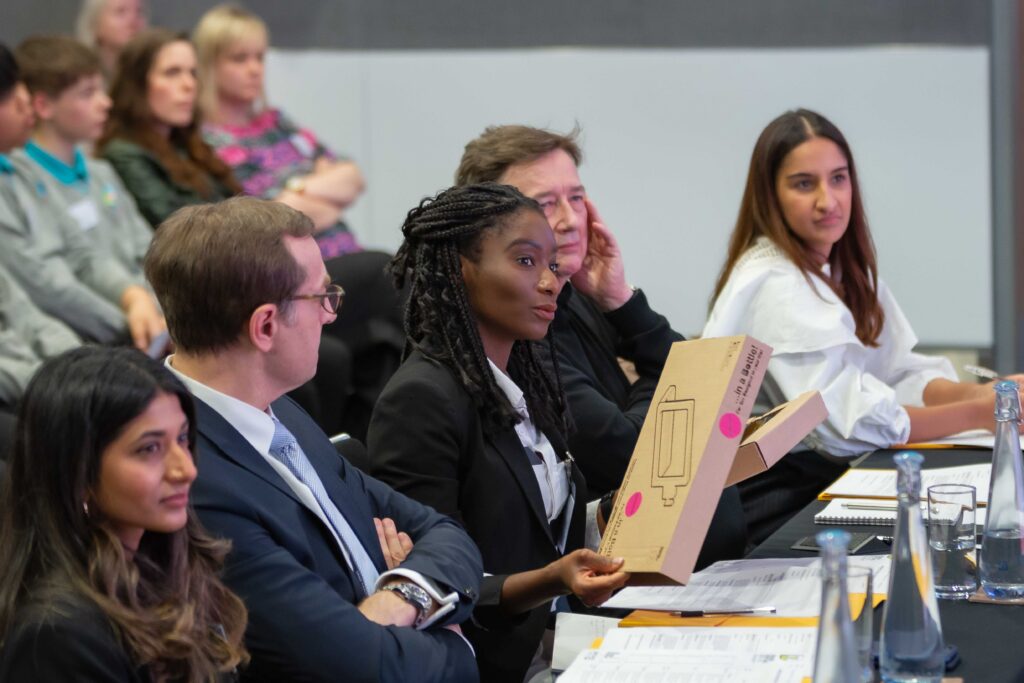
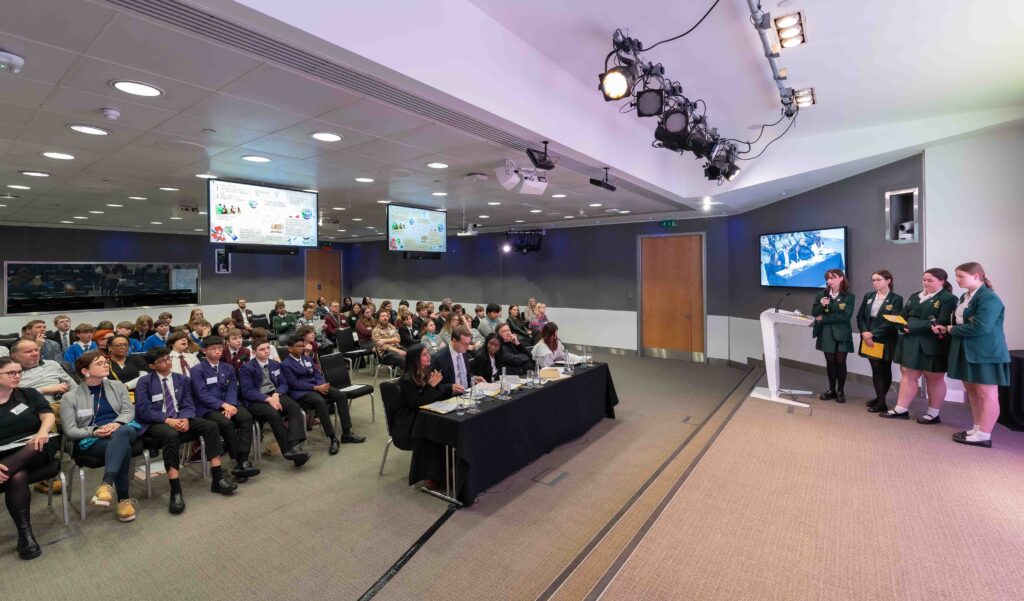
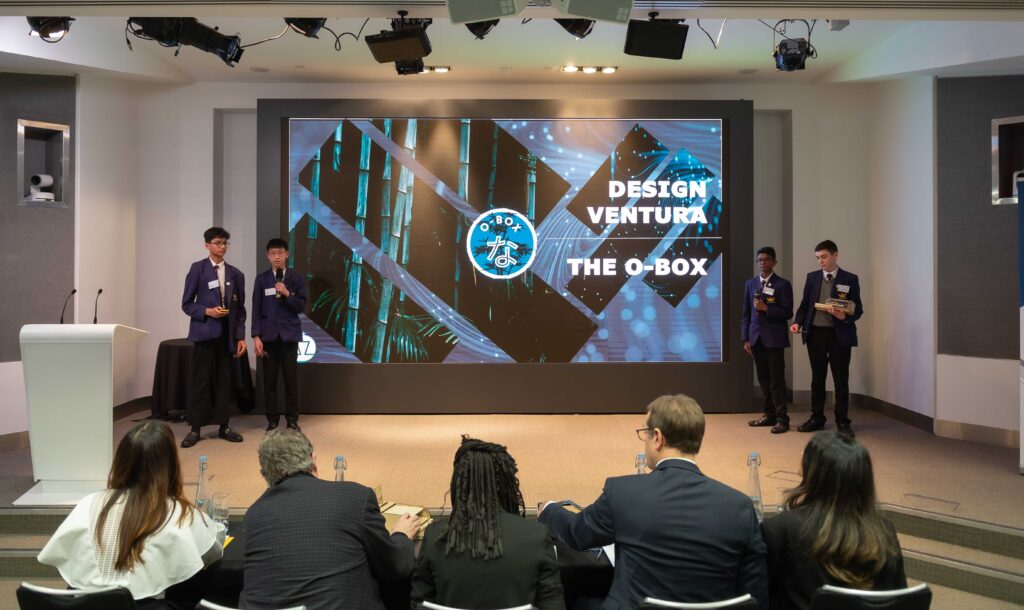
Whilst the judges were busy deliberating and having to make very difficult decisions choosing all the prize winners, the students took part in a networking session with the other top 10 schools!
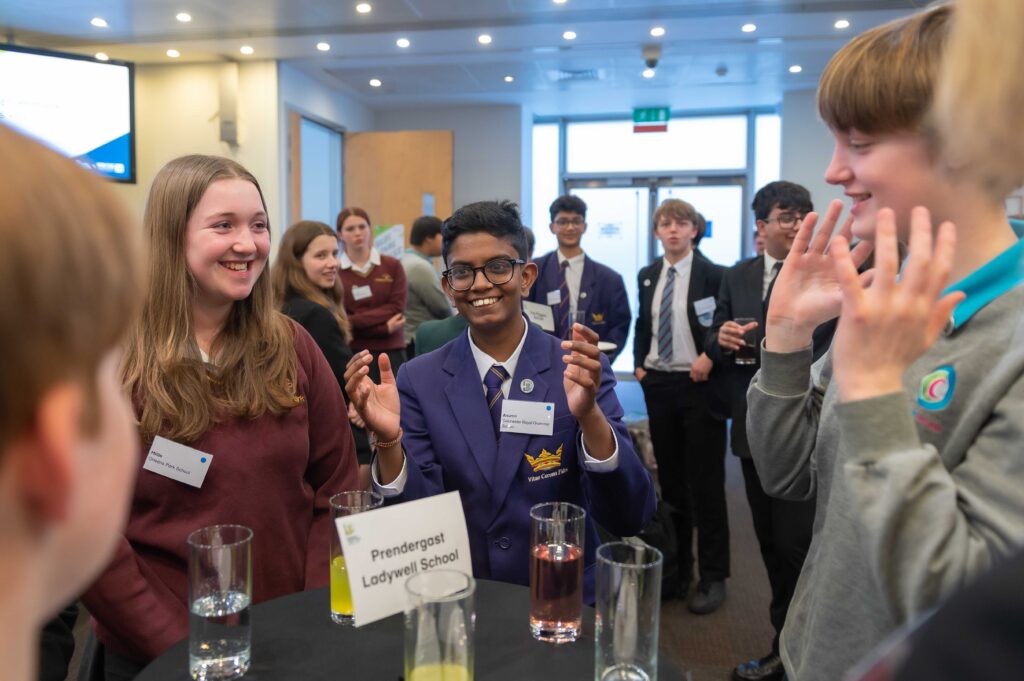
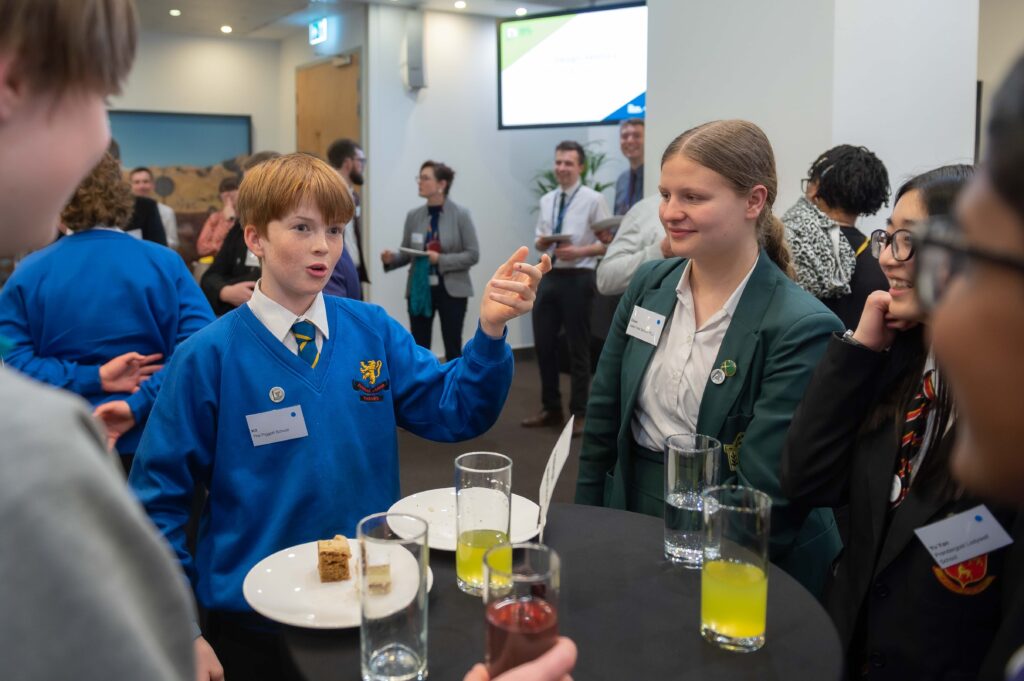
The winner will be announced in April when all the schools will return to the Design Museum for the Celebration Event.
All photos ©Richard Heald/Design Museum
-
Design Ventura Pitching Event 2021-22
On 22 March 2022, the Design Ventura team welcomed the top ten shortlisted schools to Deutsche Bank HQ, Winchester House, for the 2021-22 Pitching Event. Below is a film of the event:
Each team had a chance to present their product idea and prototypes to our panel of expert judges who were extremely impressed with the professionalism of the students’ three minute pitches.
The judges from left to right: Rosa Bertoli, Christoph Woermann, Preena Patel, Yuri Suzuki and Sebastian Conran.
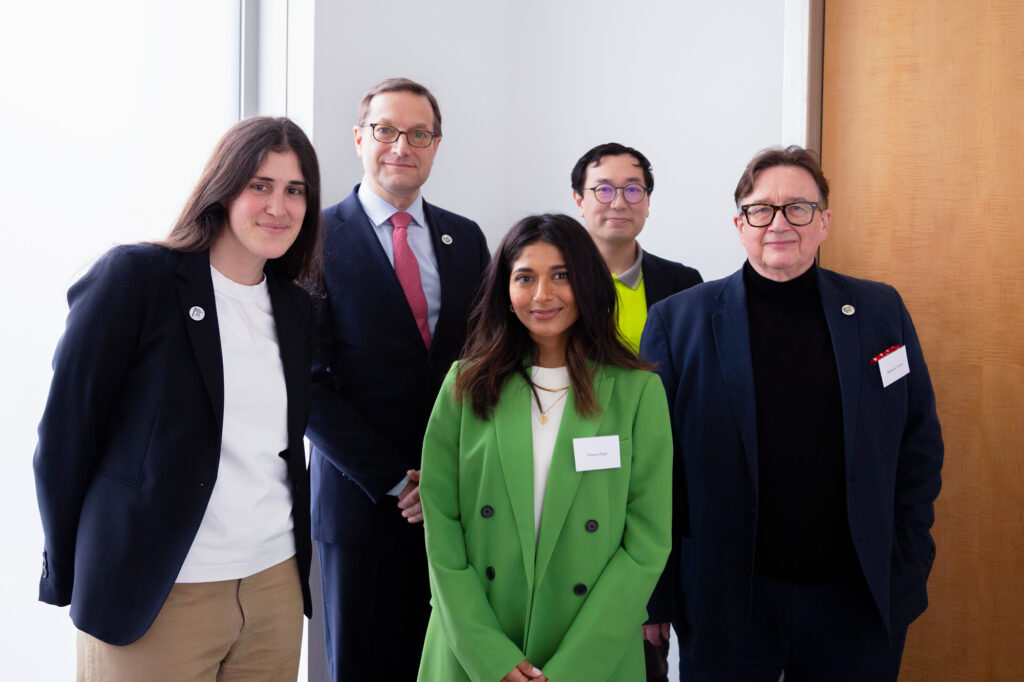
Lareena Hilton, Global Head of Brand Communications & CSR at Deutsche Bank, kicked off the event with a very warm welcome to Winchester House.
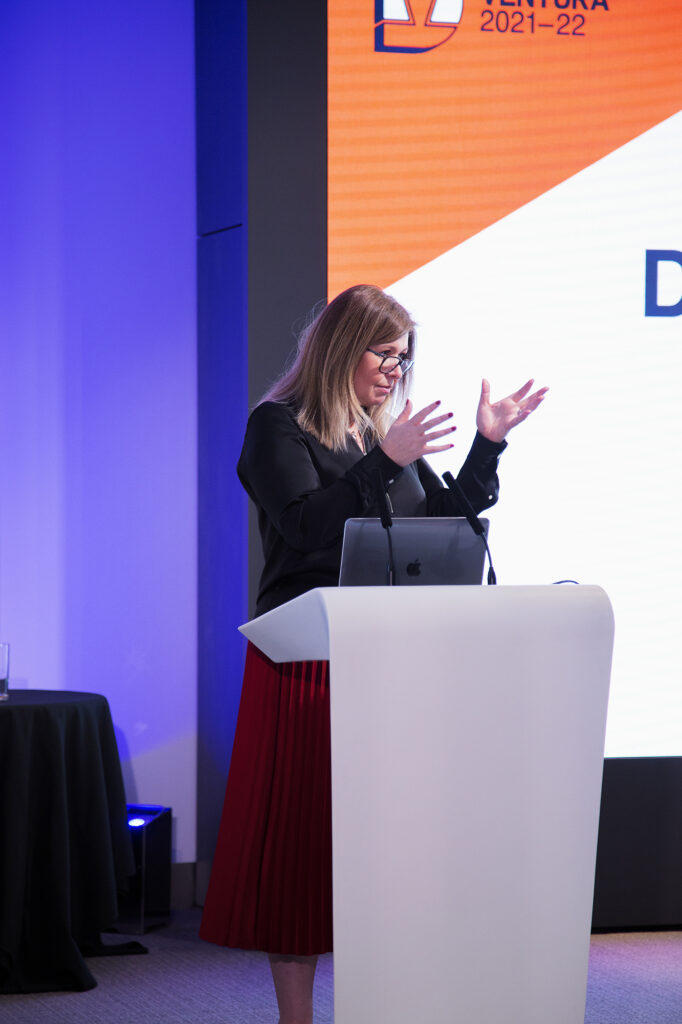
Fiona MacDonald, Head of Learning at the Design Museum thanked everyone for coming and passed over to Ellen Ferguson who invited each school up to pitch.
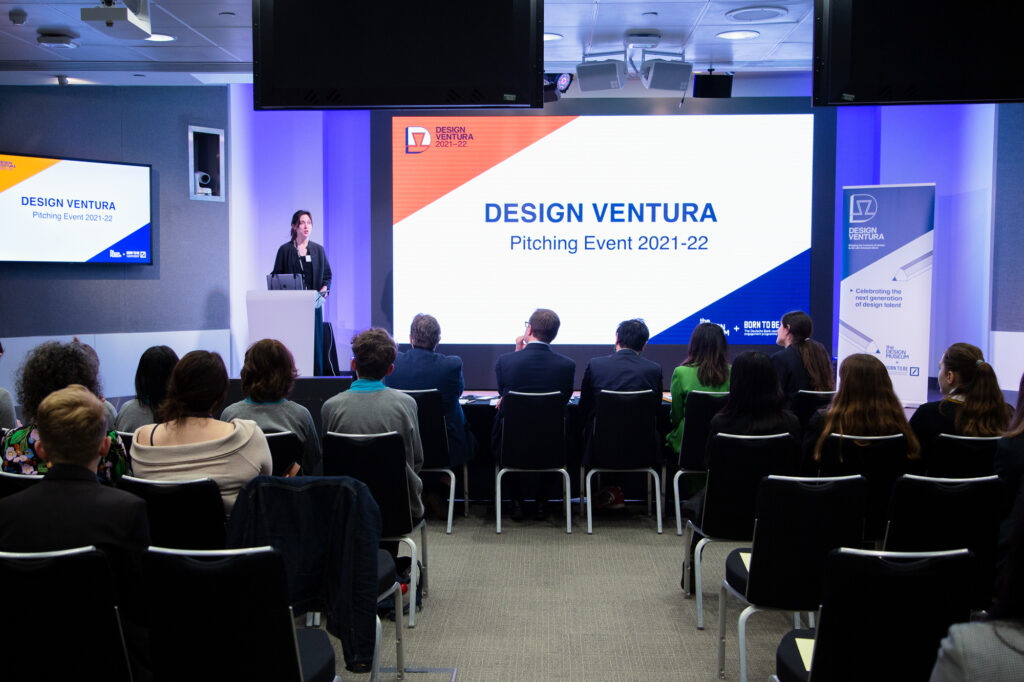
The panel had a fantastic time meeting the students, watching their presentations and questioning them about their product ideas. The students were very well prepared and gave fantastic answers!
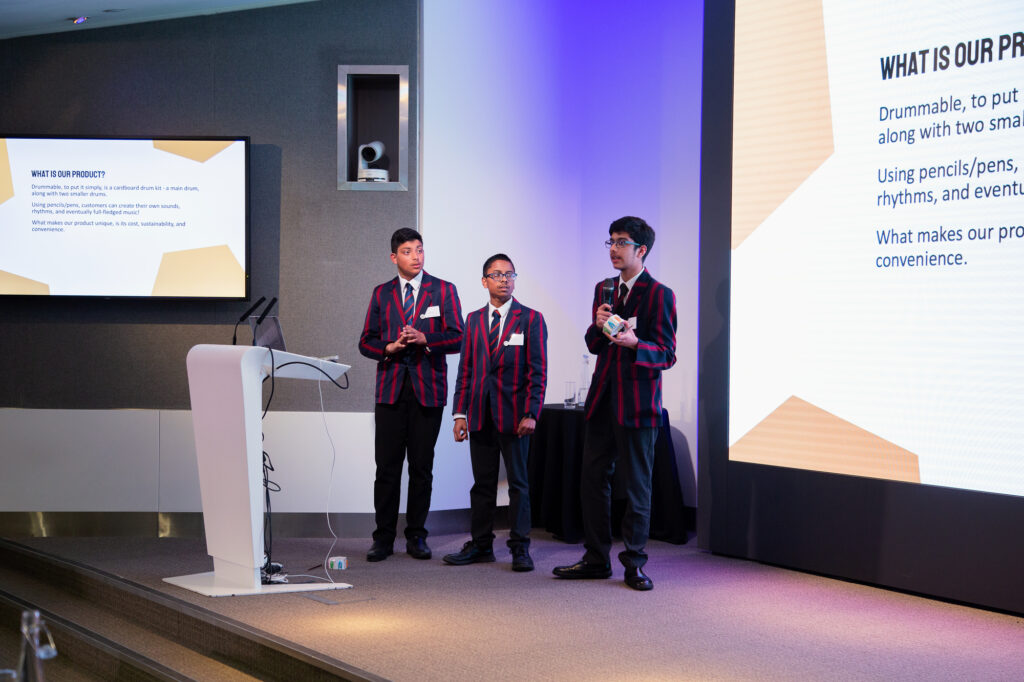
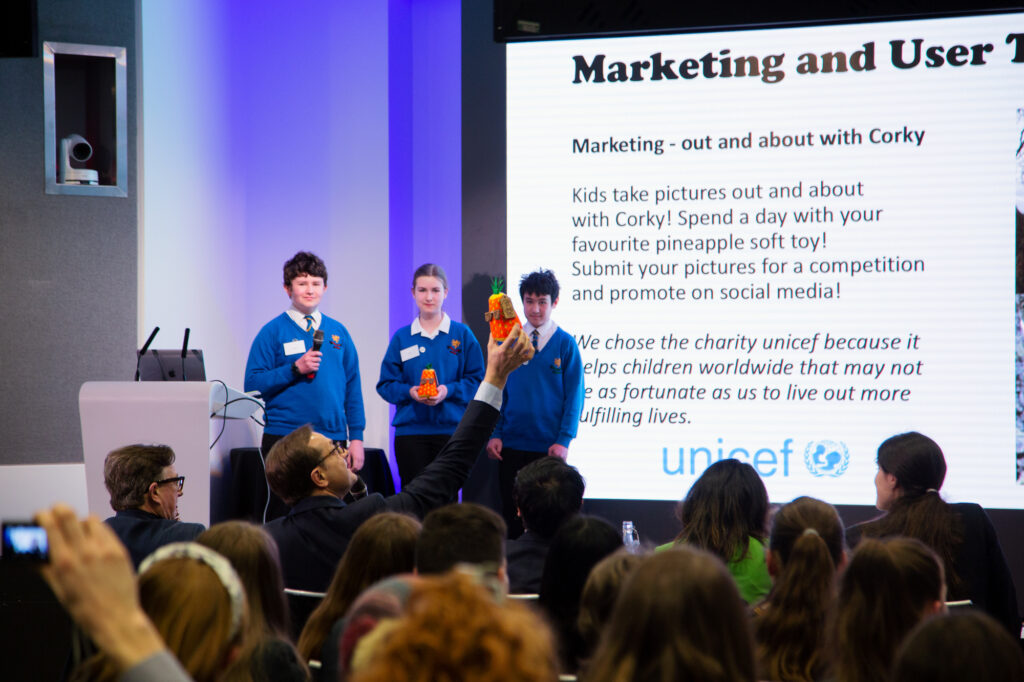
Whilst the judges were busy deliberating and having to make very difficult decisions choosing all the prize winners, the students took part in a fun design challenge, seeing who could create the tallest Jenga tower!
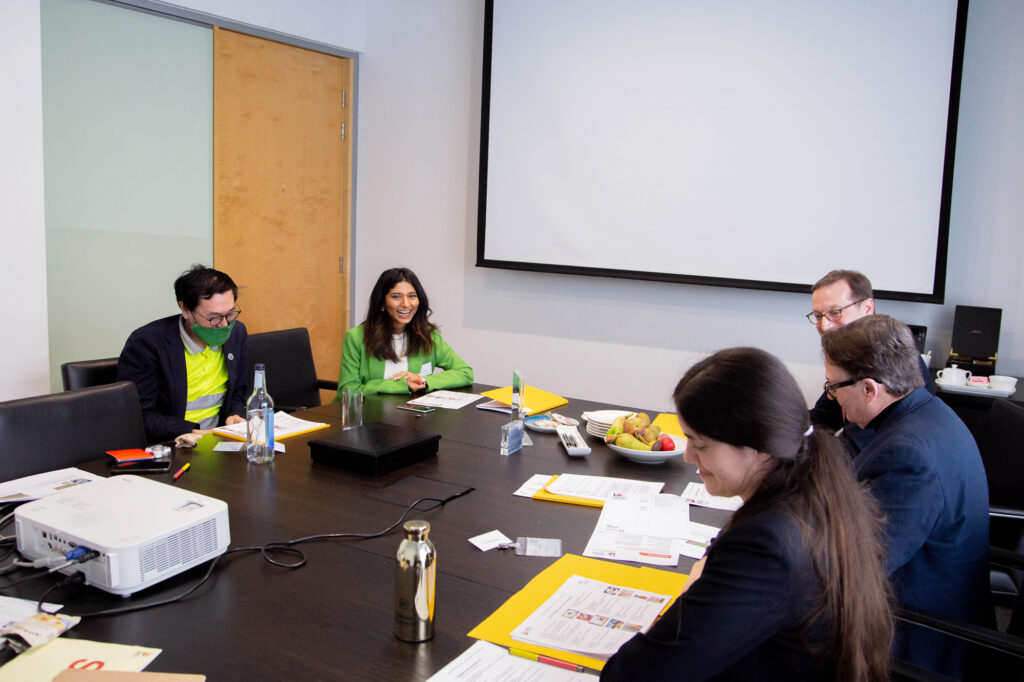
Cambourne Village College won the challenge with a very tall tower!
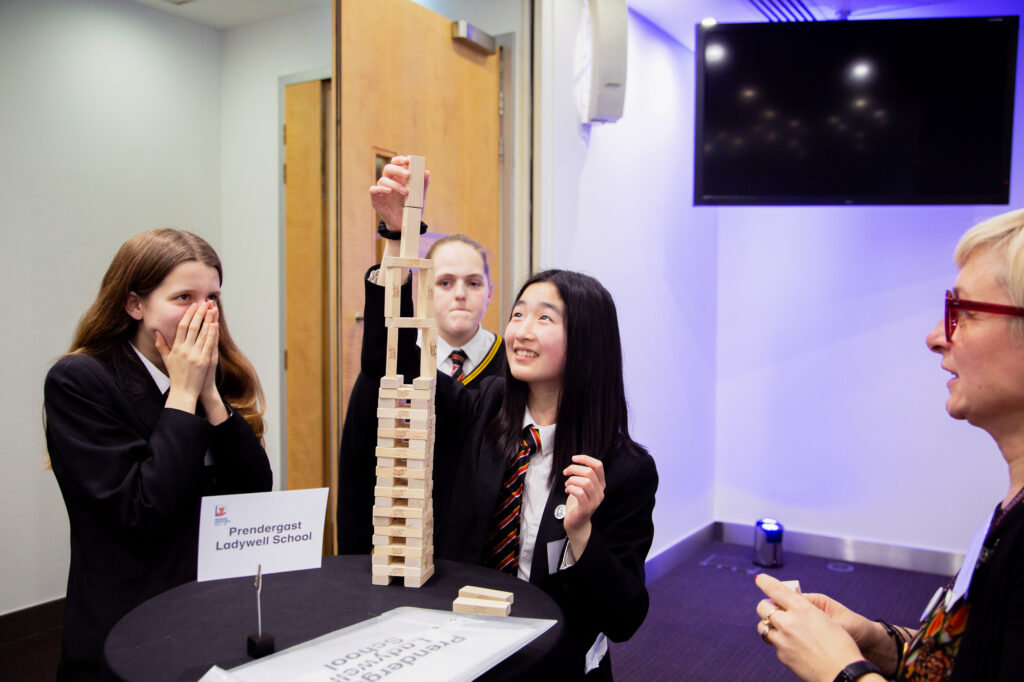
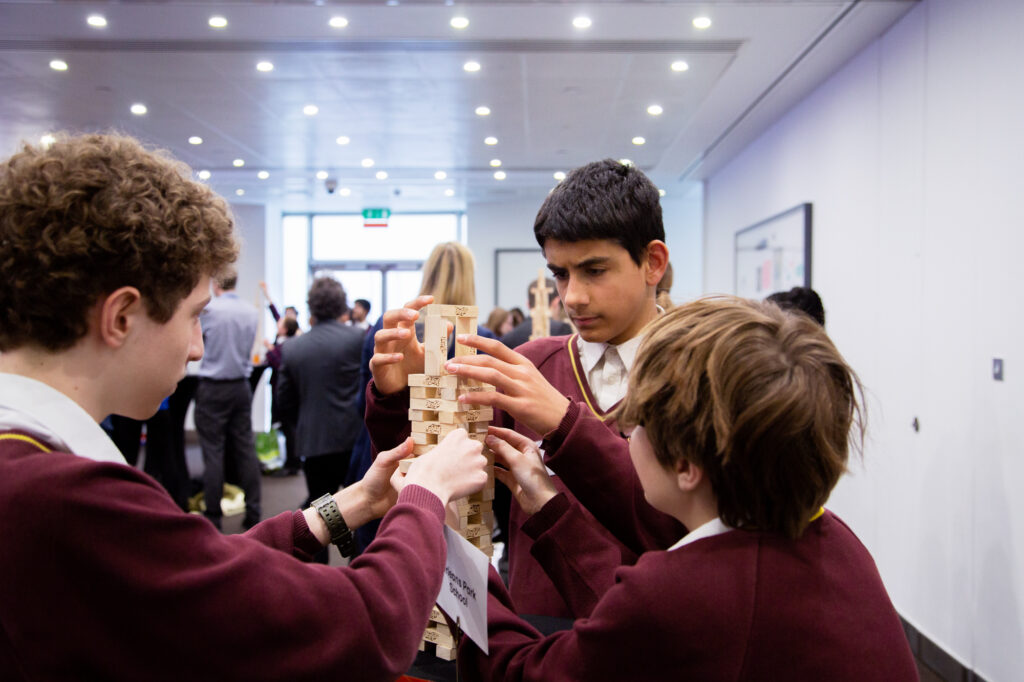
The day ended with the judges giving constructive feedback to all the teams. The winner will be announced in April when all the schools will return to the Design Museum for the Celebration Event.
All photos ©Luc Schol/Design Museum
-
Design Ventura 2020 Online Pitching Event
On Wednesday 12 May 2021, the Design Ventura team hosted an online pitching event as part of the Design Ventura 2020 competition. The shortlisted schools were invited to create a 3 minute pitch video explaining their product idea. This was reviewed by our panel of expert judges as part of the online pitching event.
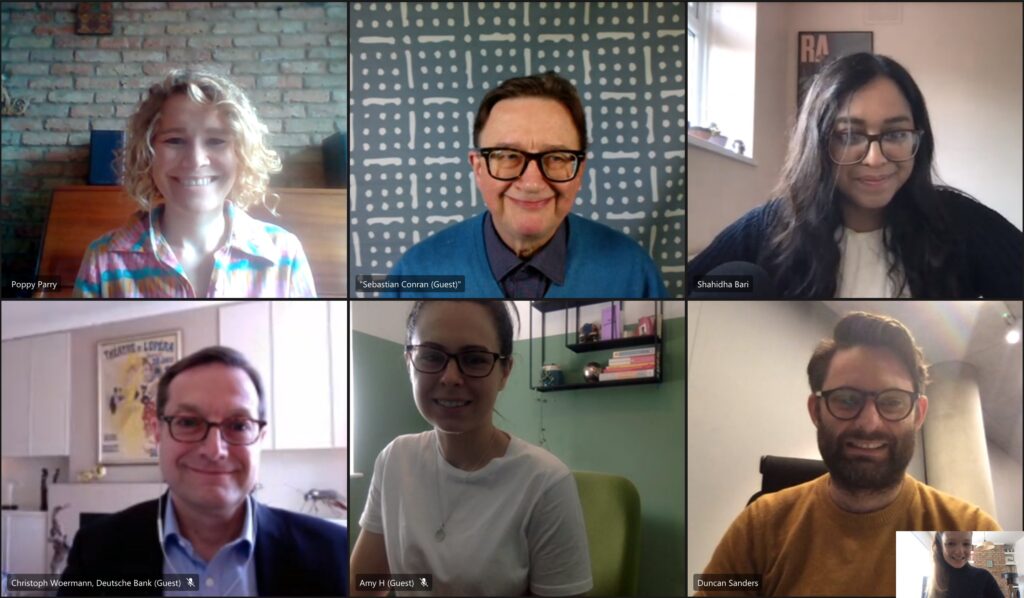
The Design Ventura Pitching Judges and the Design Ventura team The judges were incredibly impressed by the professionalism of the students’ pitch videos. You can watch a selection of short snippets of these in the video below:
The seven state schools also joined the judges for a 15 minute live Q&A session. This was an opportunity for the judges to ask the students further questions about their design process and product idea. The judges really enjoyed meeting the students and learning more about their designs.
Well done to all the student teams for all their hard work. We look forward to welcoming the state schools to the Design Museum for the Celebration Event on Friday 11 June 2021, where the winner will be announced. The schools in the International and Independent Category will attend an award day at the Design Museum in July.
Good luck teams!
-
Industry Insights: Understanding the Pitching Process
We sometimes fall in love with our own ideas. Once we spent a lot of time thinking, prototyping and developing, we can get attached to them, and that’s a good thing. It means we believe in the product we have created and the purpose it has.
However, we should always be able to step away and look at our ideas through a different lens. Because when the pitching process starts, it is not what you or your team think about the product. It’s how the audience you are pitching to will perceive it that counts. Remember, it’s the first time they are going see it.
Be honest to yourself. And also, be aware of the people in the audience. try to understand them if you can. What have they done in the past, how do they approach their work. They need to be engaged, even entertained, while you are pitching. How are you going to engage and entertain them with your pitch?
There’s a question I always ask to myself when I have to present something new: Can I explain this idea in ten words or less? It’s a tough one, but it allows me to focus on communicating the most important things, without getting lost in irrelevant details.
Here is an example of my own work, where I was challenged to find ways to help raise funds for a charity called “Pathway” that helps homeless people get personalised medical attention when they are treated in a London Hospital.


This is the idea we had, in ten words: Up-cycle former homeless clothes to show transformational impact of healthcare.
So, when pitching your idea, keep that in mind: what ten words describes your product? Your audience might not be aware of all the work you put behind it but if the idea is relevant and catches their attention it will come alive and grow in the real world. Focus on that.
-
Design Ventura Pitching Event 2019
On 9 December 2019, the Design Ventura team welcomed the top ten shortlisted schools to Deutsche Bank HQ, Winchester House, for the 2019 Pitching Event. Below is a film of the event:
Each team had a chance to present their product idea and prototypes to our panel of expert judges who were extremely impressed with the professionalism of the students’ three minute pitches.
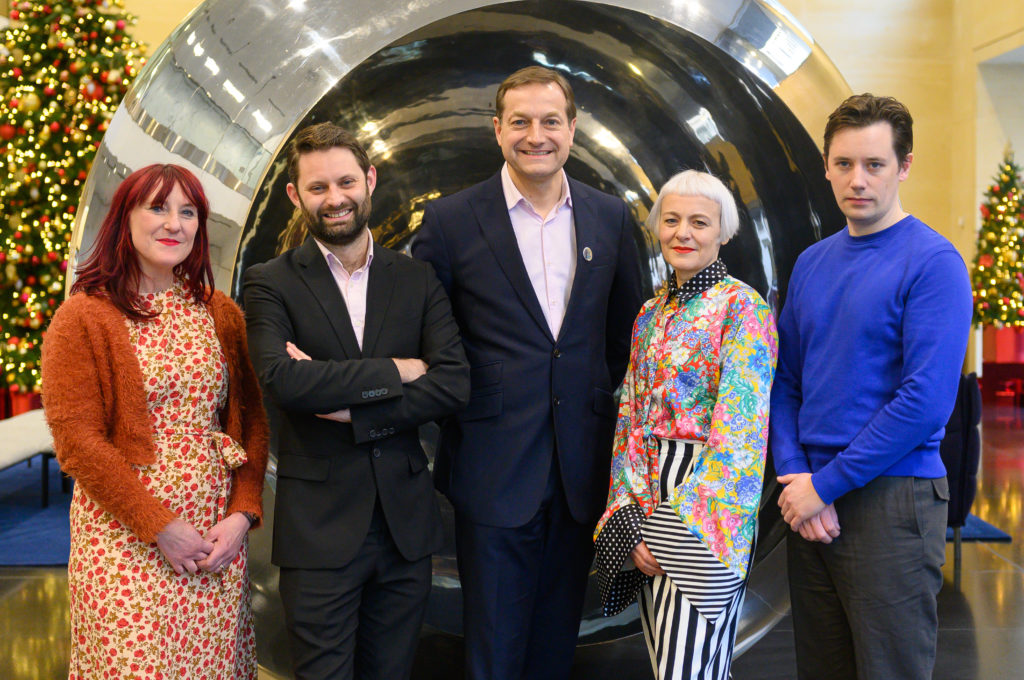
The judges from left to right: Katie Greenyer, Duncan Sanders, Christoph Woermann, Morag Myerscough, and Joseph Halligan.
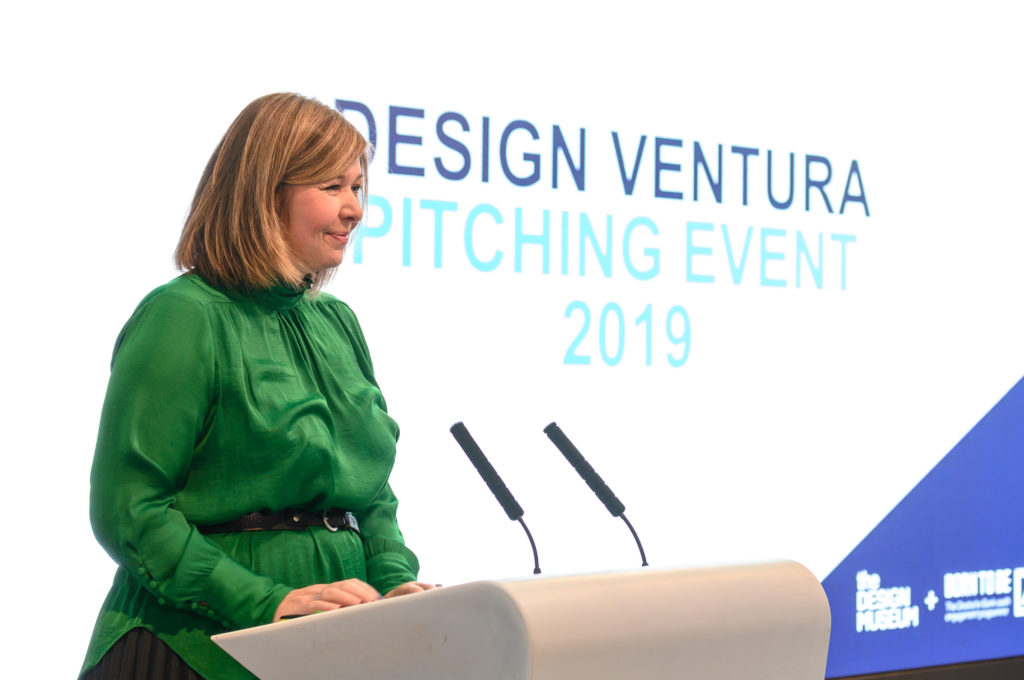
Lareena Hilton, Global Head of Brand Communications & CSR at Deutsche Bank, kicked off the event with a very warm welcome to Winchester House.
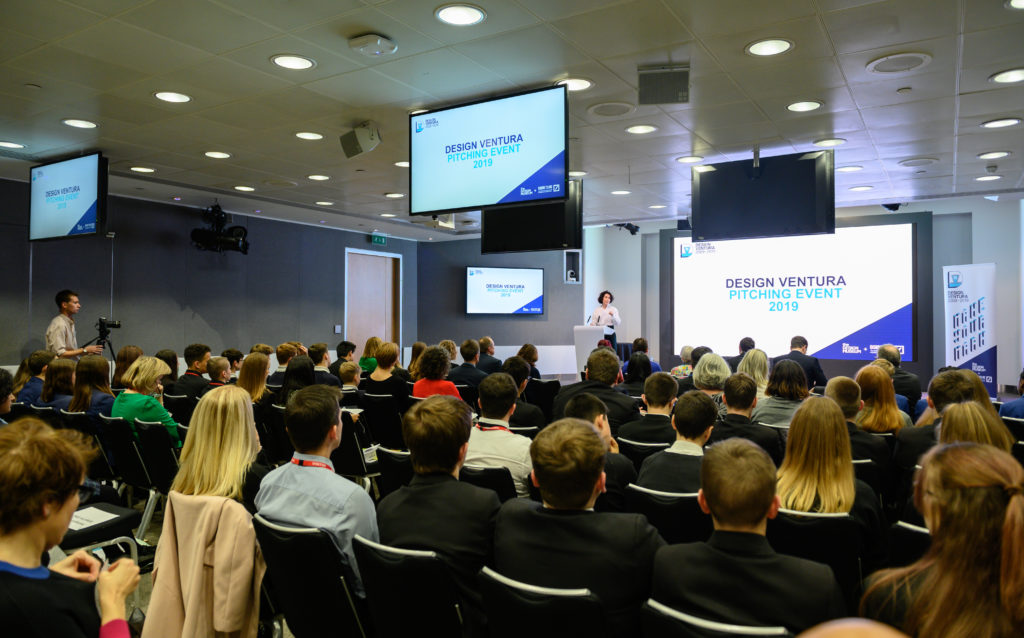
Alice Black, Director of the Design Museum, thanked everyone for coming and passed over to Ellen Ferguson who invited each school up to pitch.
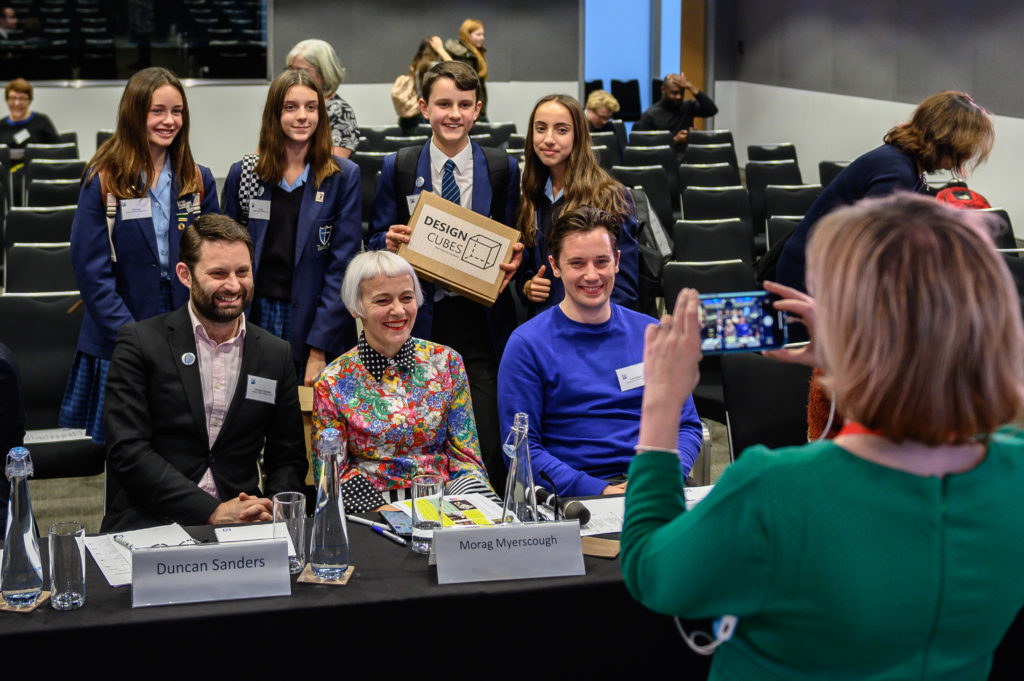
The panel had a fantastic time meeting the students, watching their presentations and questioning them about their product ideas. The students were very well prepared and gave fantastic answers!
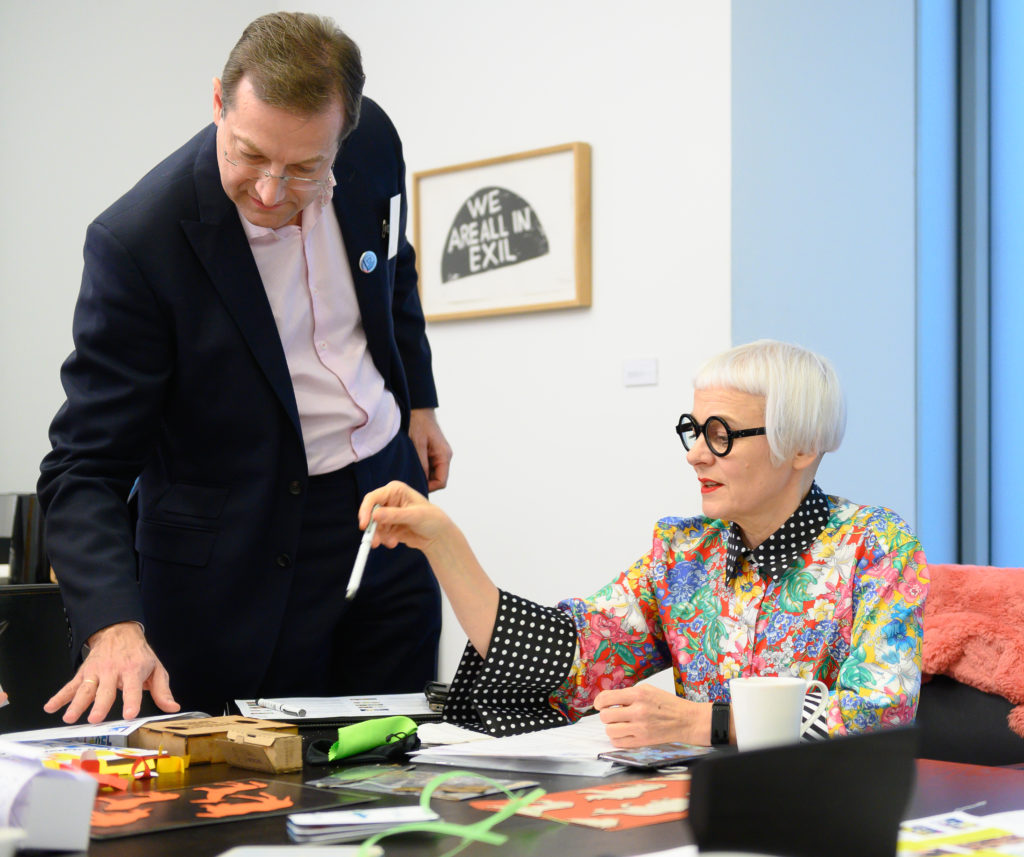
Whilst the judges were busy deliberating and having to make very difficult decisions choosing all the prize winners, the students took part in a fun design challenge, seeing who could create the tallest Jenga tower!
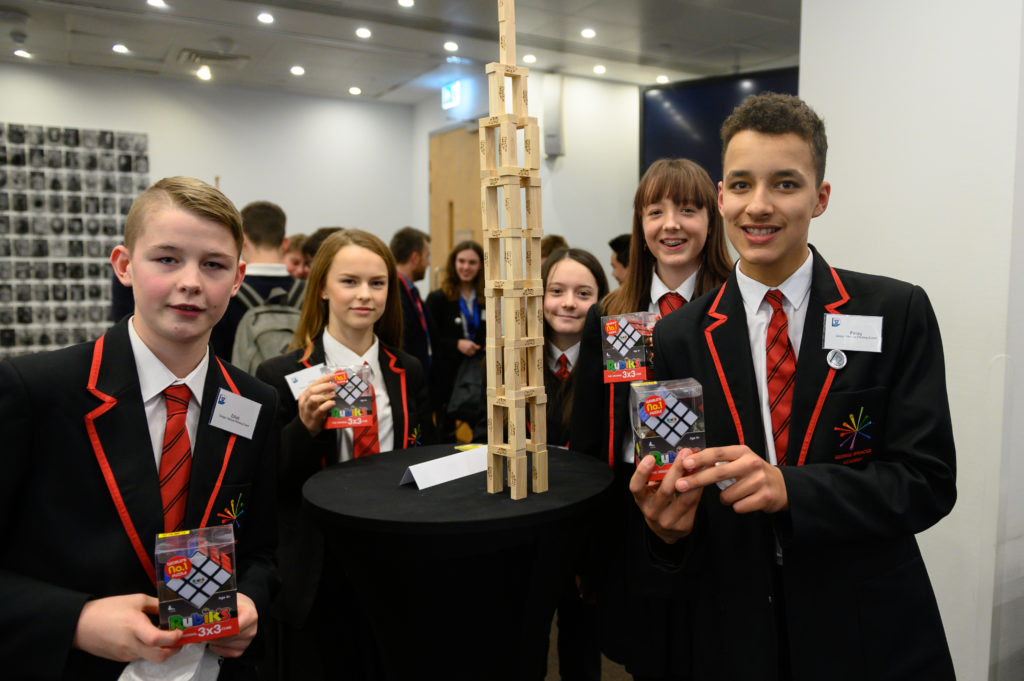
George Spencer Academy won the challenge with a very tall tower!
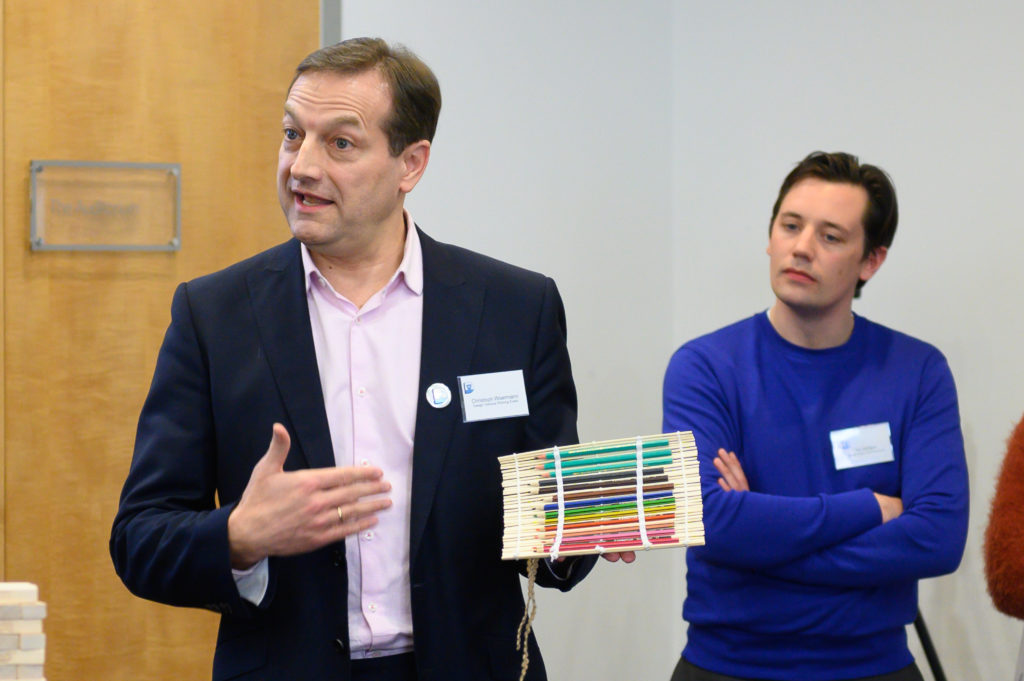
The day ended with the judges giving constructive feedback to all the teams. The winner will be announced in February when all the schools will return to the Design Museum for the Celebration Event.
All photos ©Richard Heald/Design Museum
-
Example Submission: 2018 Family Stuff Fund
As the deadline for Design Ventura approaches, we wanted to look back at the submission that won ‘commendation for most market ready product’ back in Design Ventura 2018.
The judges loved Spalding School’s Family Stuff Fund. The panel liked that the idea improved every day life for one of the Design Museum Shop’s target users – families. This was well demonstrated thorough development, prototyping and research.
Below is their submission form and A3 sheets. We’d like to highlight some of the strengths and some areas for improvement from their submission, things to look out for when submitting for Design Ventura 2019.
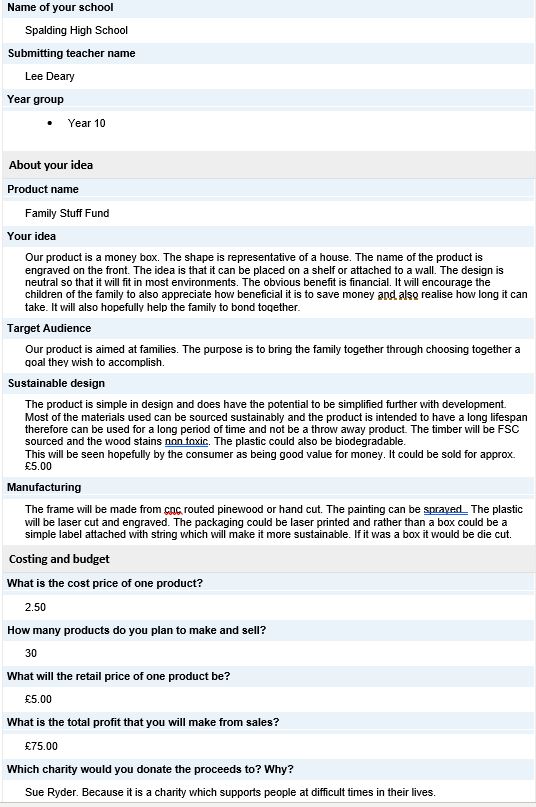
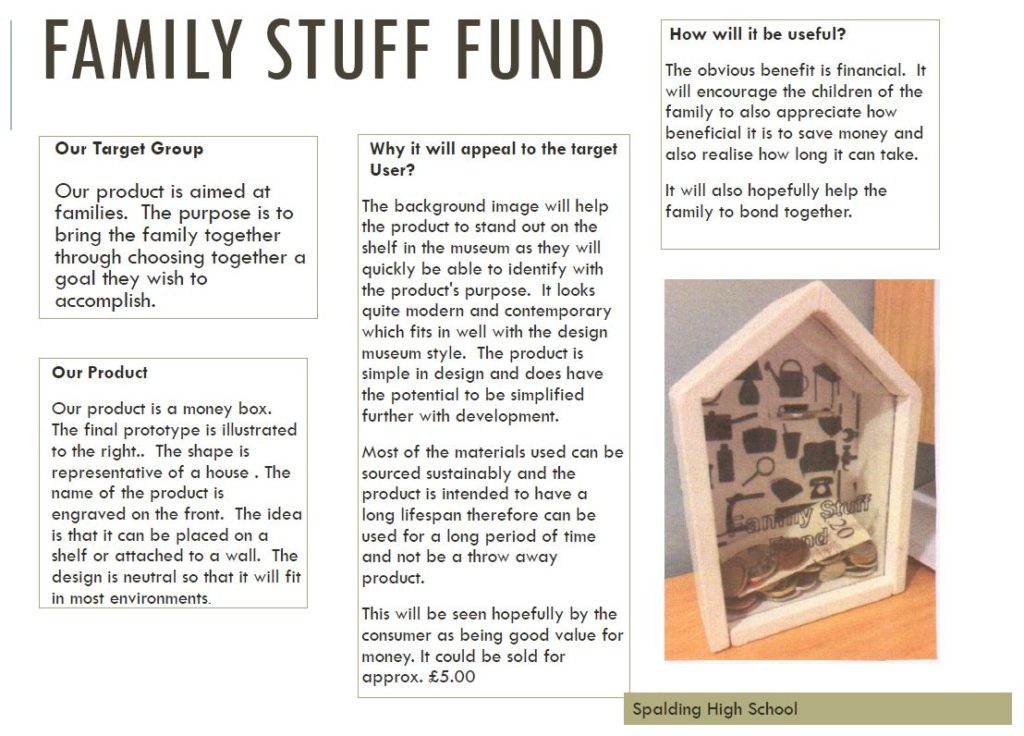
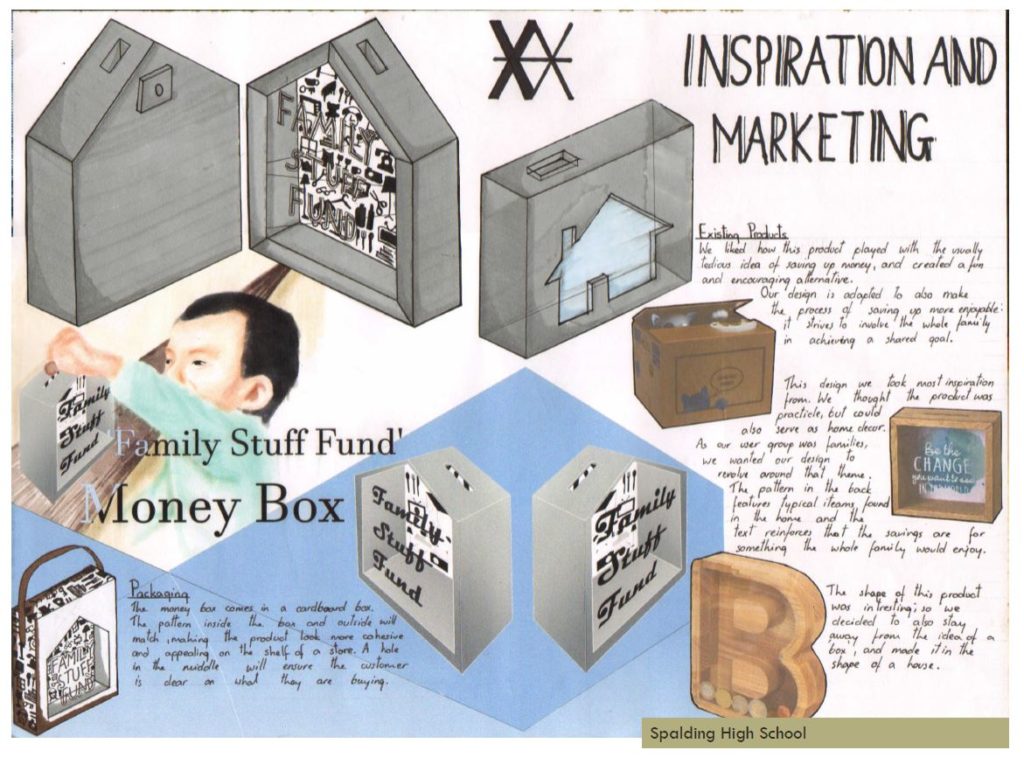
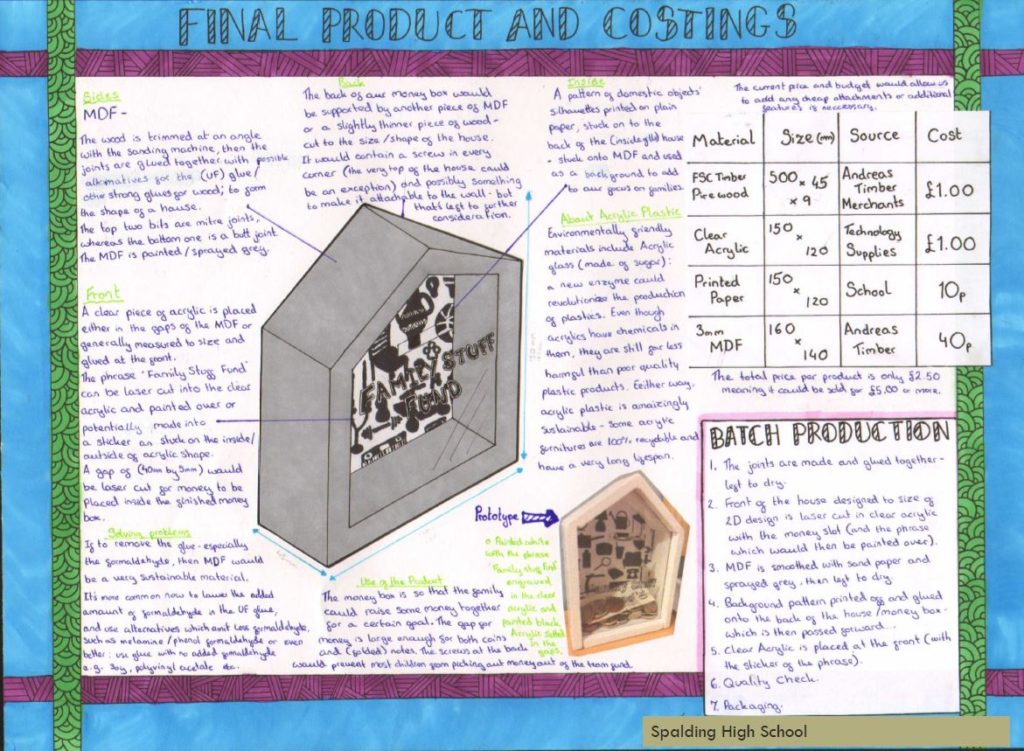
Strengths:
- Clarity – the layout is clear and easy to understand. The sheets clearly communicate what the product is and show the design process. Also, each sheet has the name of the school at the bottom.
- Design Development – the sheets show the design process. They include initial sketches of the idea, research into similar existing products, photos of prototypes and ideas for packaging design.
- Budgeting – they have looked at costings and suppliers.
Areas for improvement:
- Further research – while they have shown good research of other similar products, some further research of the Design Museum Shop specifically could have been useful to show.
- User testing and feedback – including feedback on their design by their target audience would have strengthened this entry.
- Sustainability – more information about how they plan to minimise the negative impact of their product on the environment would have strengthened this entry.
The Spalding High School team made it into the Design Ventura 2018 top ten shortlist with this submission. They pitched their ideas to our expert judges at the Pitching Event in December and were awarded ‘commendation for most market ready product’ at the Celebration Event in February.
We can’t wait to see all the wonderful submissions for Design Ventura 2019!
-
Design Ventura Pitching Event 2018
On 10 December, the Design Ventura team welcomed the top ten shortlisted schools to the Design Museum for the 2018 Pitching Event:
Each team had a chance to present their idea and prototypes to our panel of expert judges who were extremely impressed with the professionalism of the students’ three minute pitches.
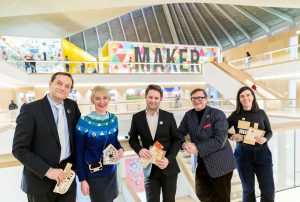
The judges from left to right: Christoph Woermann, Donna Wilson, Duncan Sanders, Sebastian Conran and Heather Corcoran.

Here are all of our schools waiting with anticipation for the Pitching Event to begin.

The panel had a fantastic time watching all the presentations and questioning the students about their product ideas. The students were very well prepared and gave fantastic answers!
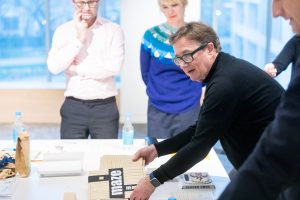
Whilst the judges were busy deliberating and having to make very difficult decisions choosing all the prize winners, the students and teachers took part in a fun design challenge, seeing who could create the tallest structure out of marshmallows and spaghetti.

Gillotts School won the challenge with a very tall tower!
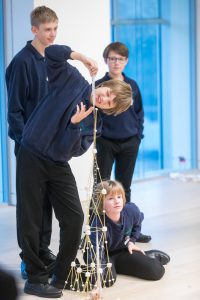
The day ended with the judges giving constructive feedback to all the teams. The winner will be announced in February when all the schools will return to the Design Museum for the Celebration Event.
All photos ©Benedict Johnson/Design Museum
-
Example Submission: 2017 Second Place Entry – Fairmead School
As the deadline for Design Ventura 2018 approaches (Wednesday 14 November, 5pm), we wanted to look back at the submission that won second place in last year’s competition.
The judges loved Fairmead School’s Spinning Thumb Plate. The panel liked that the idea met a specific need, demonstrated thorough development, prototyping and research.
Below is their submission form and A3 sheets. We’d like to highlight some of the strengths and some areas for improvement from their submission, things to look out for when submitting for Design Ventura 2018.
Entry Form:
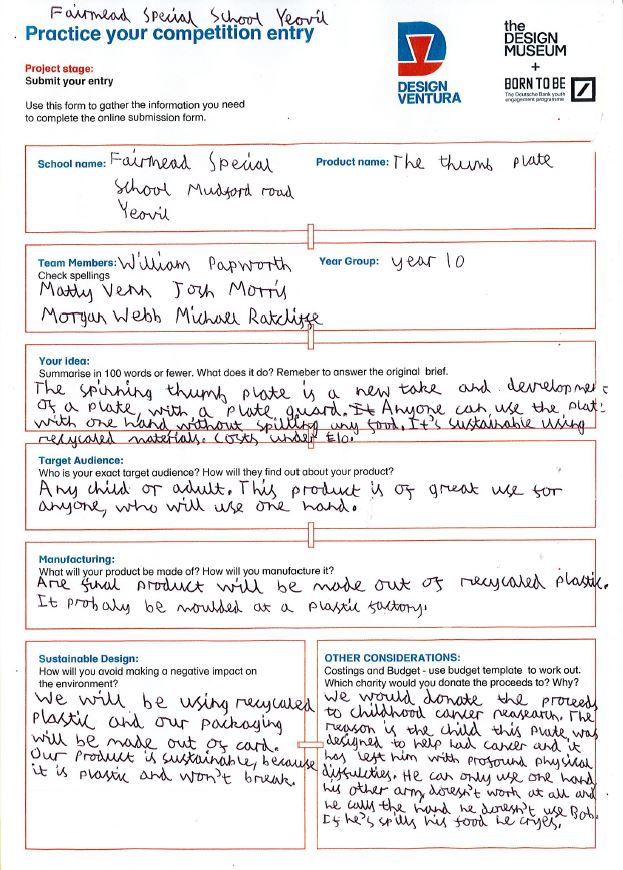
A3 Sheets:
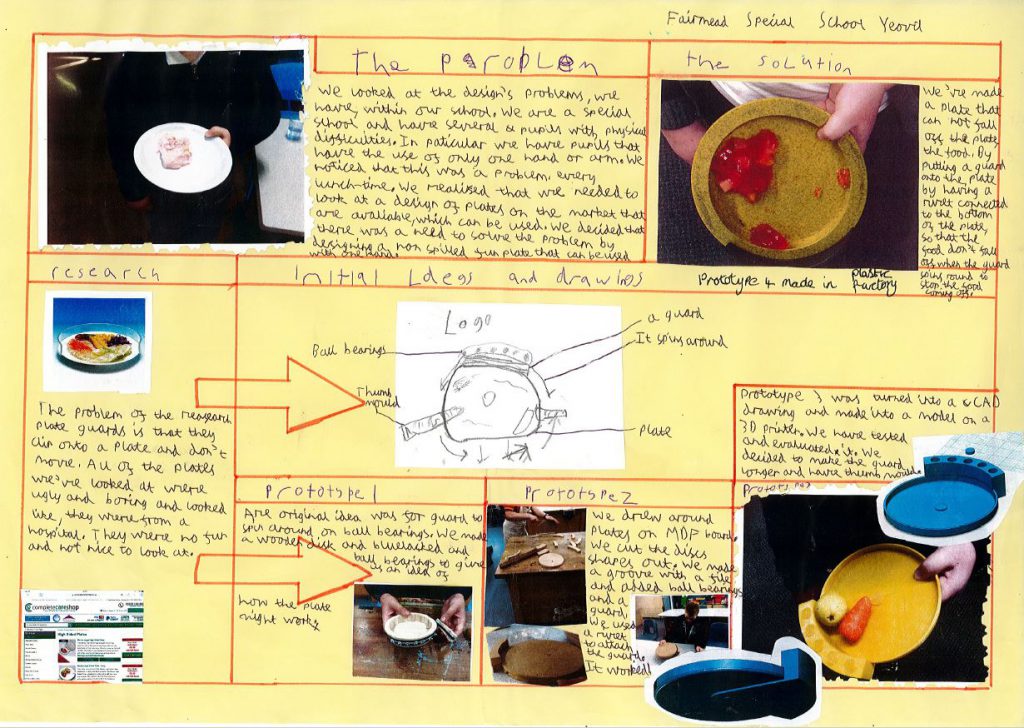
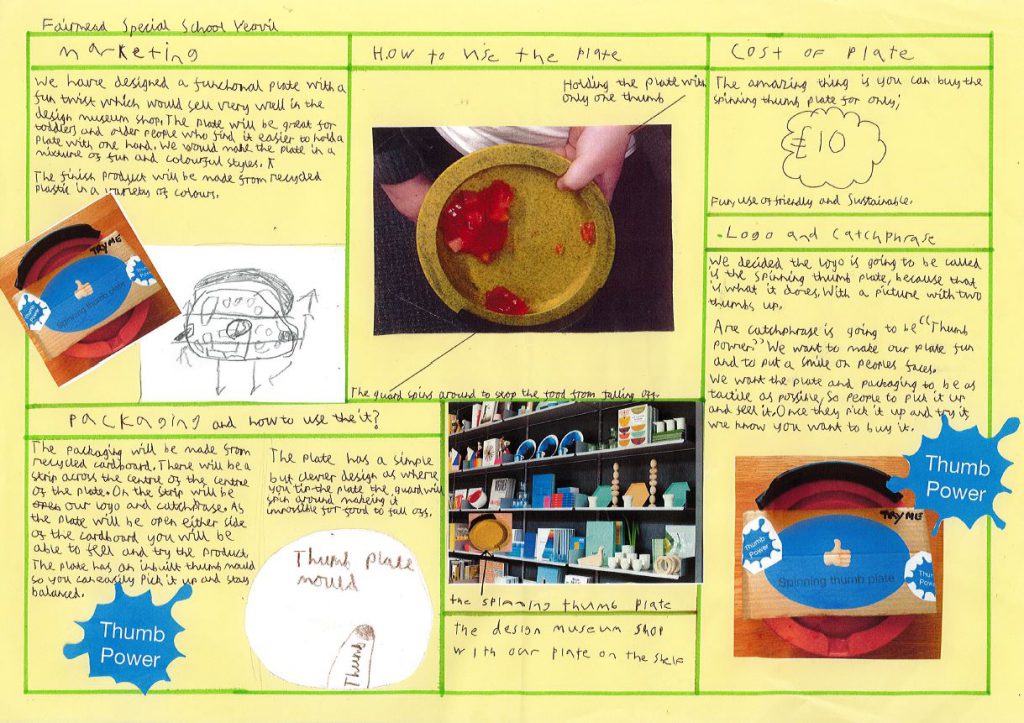
Budget:

Strengths:- Clarity – the layout is clear and easy to understand. The sheets clearly communicate what the product is and show the full design process. Also, each sheet has the name of the school at the top.
- Design Development – the sheets show the design process from beginning to end. They include initial sketches of the idea and photos of different prototypes. They show the product in use and the planned packaging design.
- Budgeting – they have filled out a sample budget sheet, looking at costings and suppliers. (While the budget sheet is not a requirement of submission, clear costings should be included in your A3 sheets if not included in a separate budget sheet.)
Areas for improvement:
- Only 2 sheets – we do ask schools to submit 3 sheets and an optional, additional budget sheet.
- Further research – while they have shown good research of other similar products, some further research of the Design Museum Shop specifically could have been useful to show.
- User testing and feedback – including feedback on their design by their target audience would have strengthened this entry.
We can’t wait to see all the wonderful submissions for Design Ventura 2018!
-
Design Ventura 2017 Pitching Day
The Design Ventura 2017 Pitching Day happened in December and it was a great day that encouraged the shortlisted schools to present their ideas in front of a panel of judges. Have a look at the video below to find out more:
-
Design Ventura Pitching day 2017
Back in December, the Design Ventura team welcomed the top ten shortlisted schools for the Pitching day where each team had a chance to present their idea and prototypes in front of a panel of judges. The judges were really impressed with the level of professionalism and confidence students revealed in their three minute pitch.
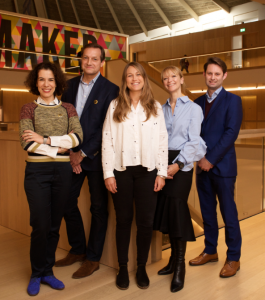
The judges from left to right: Alice Black, Christoph Woermann, Anna Bullus, Naomi Cleaver and Duncan Sanders who kindly replaced Sebastian Conran for the day who sadly couldn’t attend. The panel had a fantastic time seeing all the presentations and questioning the students (who were so well prepared and gave very persuasive answers!).
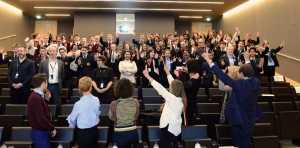
Here are our top ten shortlisted schools ready for to start their pitches.
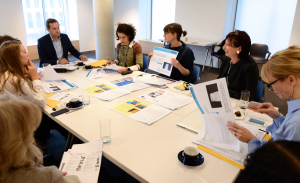
Whilst the judges were busy deliberating and having to make a very difficult decision of choosing all the prize winners, the students and teachers had a competition of paper towers which was a lot of fun!

The day ended with the judges giving constructive feedback to all teams.
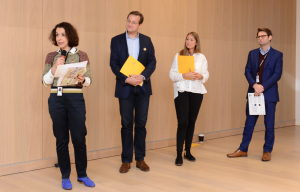
The winner will be announced in February at the Celebration Event.
All photos ©Richard Heald Photography/Design Museum
-
School post: Paignton Community and Sports Academy
The following post is written by Paignton Community and Sports Academy School. We loved the students commitment and enthusiasm in the school pitching event. You can read the full article here.
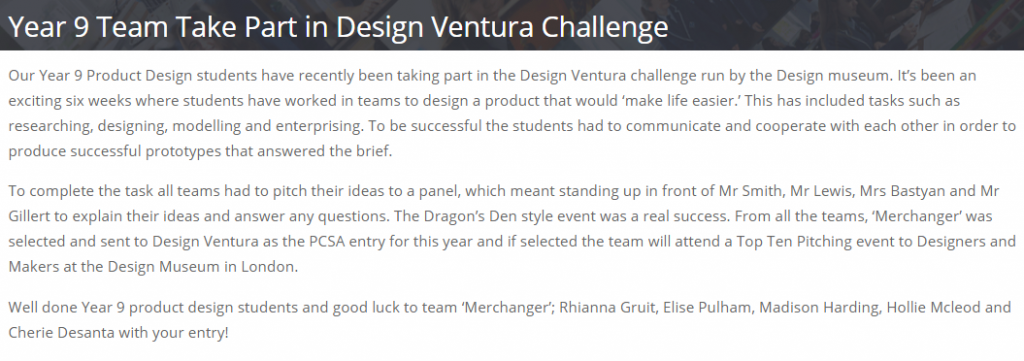
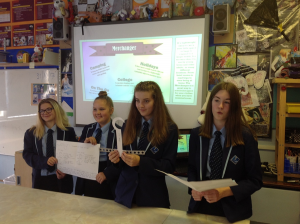

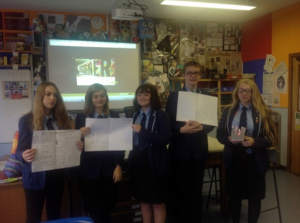
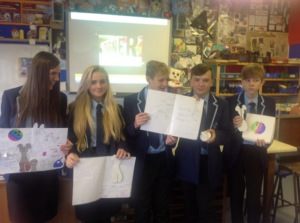
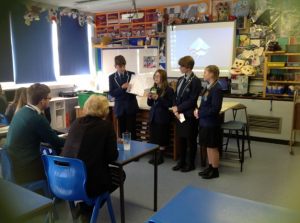
-
The Harrogate Grammar School journey…
During our Finishing and Presenting ideas webinars, the participants had a chance to know in detail the journey of last year’s winner from the perspective of their leading school teacher, Dave Allen. We thought that Dave’s presentation was very comprehensive, explained what we are looking for and showed in detail the journey that the Harrogate Grammar team went through. We have made Dave’s presentation available below for your reference whilst doing your Design Ventura project (PS – make sure you check his tips at the very end!).
If you couldn’t attend any of our webinars, you can now consult our webinars here.





-
Recorded webinars available to watch: CPD session, Beyond the Obvious, and Refining and Presenting ideas
This year and for the first time, we held three webinars in September and October to extend the reach of the project particularly to those schools that are too far or can’t attend museum workshops.
- Teacher Online CPD
- Beyond the Obvious
- Refining and Presenting Ideas
If you were unable to attend our webinars or would like to go refer back to a piece of information, you will be pleased to hear that our webinar videos were recorded and are now available for viewing. To see any of the videos below, just click play.
Design Ventura 2017 – Teacher Online CPD recorded on 14 September 2017
Design Ventura 2017 – Beyond the obvious recorded on 05 October 2017
Design Ventura 2017 – Refining and Presenting Ideas recorded on 12 October
-
Top #5 tips for your submission
As we are getting closer to the submission day – 14 November at 5pm – we thought that you could use some last minute tips. For a detailed handout on how to submit your entry step by step, please click here.
- One submission per school. Remember, your school can submit only one entry so choose wisely! You can still feature other ideas on our website by submitting a blog post, or tweeting about it using the hashtag #designventura.
- Short and sweet. The shortlisting panel will be going through a lot of entries so make sure that your form is easy to understand and straight to the point.
- Be ready for submission. The final submission form is very important, please refer back to the judging criteria. When you log in to submit your entry, have your files saved on your computer ready for uploading. We recommend that you add your school name to the top of each A3 sheet and submit your attachment in pdf format.
- Evaluation form. Please make sure that both teachers and students fill in their evaluation form.
- Let’s do it! Enter your school’s idea even if you don’t think you have a ‘winner’. Our judges see the potential in all ideas. Remember: all schools that submitted an idea will receive certificates to mark your student’s participation.
We cannot wait to see all your ideas! Good luck everyone!
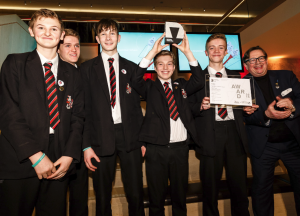
-
Winning Product 2016 – Aqua Hook
 The Design Ventura 2016 winners are Harrogate Grammar School with Aqua Hook, a water bottle hook that can be clipped to any loop outside of a bag to carry a bottle. Designed with the 2016 brief “Change” in mind, this practical product was a favourite with the judges.
The Design Ventura 2016 winners are Harrogate Grammar School with Aqua Hook, a water bottle hook that can be clipped to any loop outside of a bag to carry a bottle. Designed with the 2016 brief “Change” in mind, this practical product was a favourite with the judges.Harrogate Grammar School’s 3 x A3 design sheets demonstrate how the team generated and developed their ideas. The sheets really clearly show the team’s design and prototyping processes and how they planned to address the criteria set out in the design brief, as well as allowing our shortlisting judges to quickly and clearly understand the final product design.



Harrogate Grammar School’s entry form:

The team competed with over 10,000 students taking part in 240 schools across the UK. With their entry, Harrogate Grammar School earned a place on the shortlist as one of ten schools invited to pitch their ideas to a panel of expert judges at the Design Museum in December 2016. You can watch the video to find out more about what happens at pitching day.
The Harrogate Grammar School team made a convincing case for Aqua Hook at the pitching event, presenting an engaging pitch and demonstrating clearly how the product fulfilled the design brief and judges criteria. The judges were impressed with the simplicity and effectiveness of the idea and that it had come out of thinking about solving a real problem the team faced. After much deliberation, the judges decided they should be the winners of Design Ventura 2016.
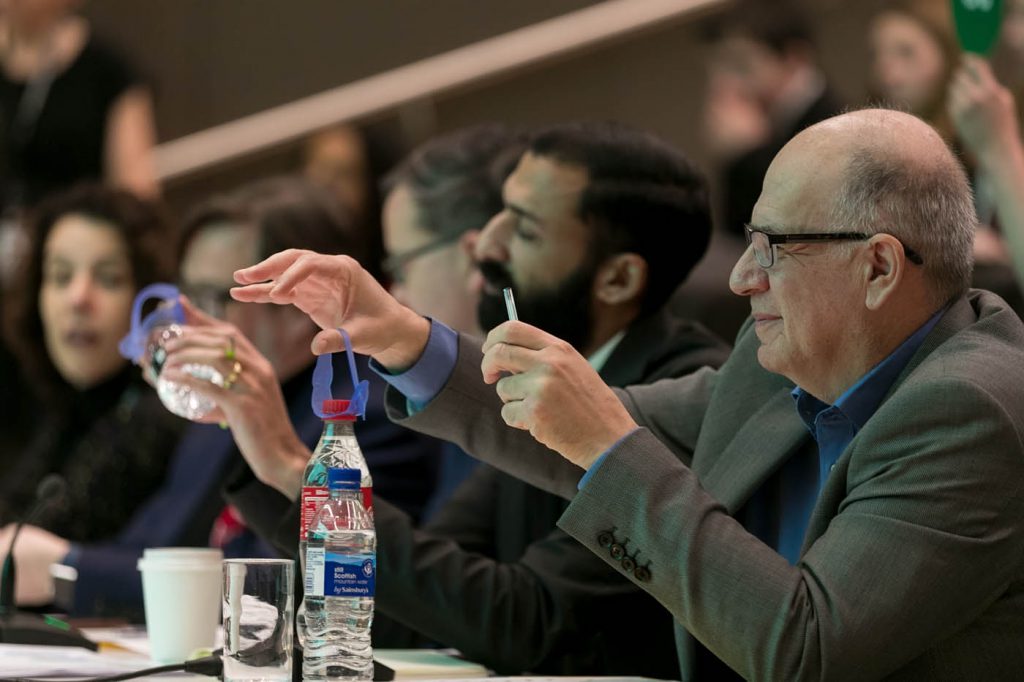
The Harrogate Grammar School team were awarded with the Design Ventura 2016 Winners award at the Celebration Event and Design Ventura exhibition opening in February 2017.

Following the Celebration Event, students from Harrogate Grammar School worked with Giles Miller Studio Ltd to develop their Design Ventura 2016 winning product, Aqua Hook.
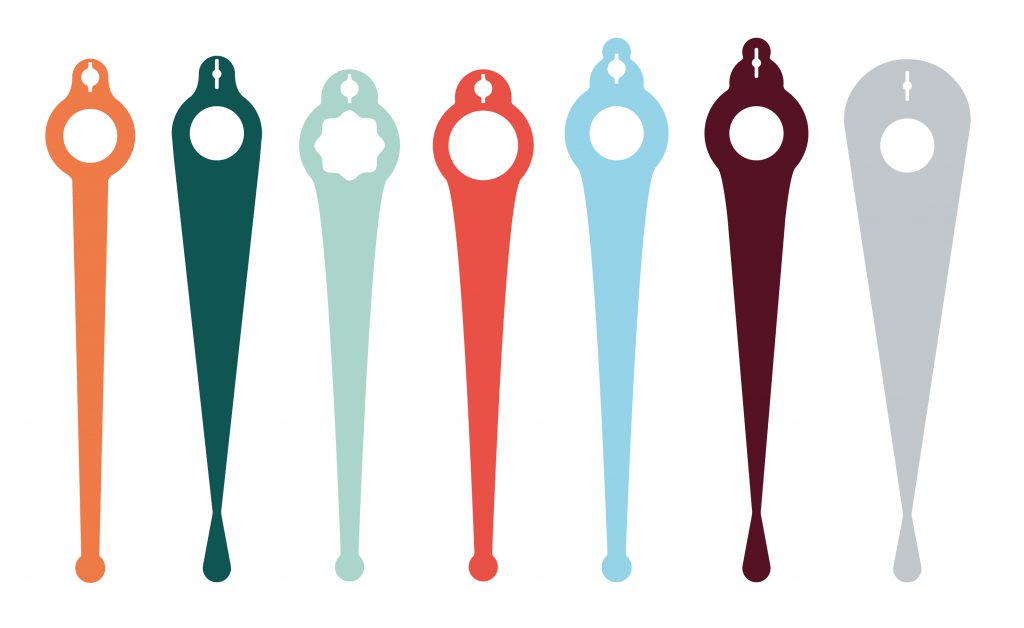
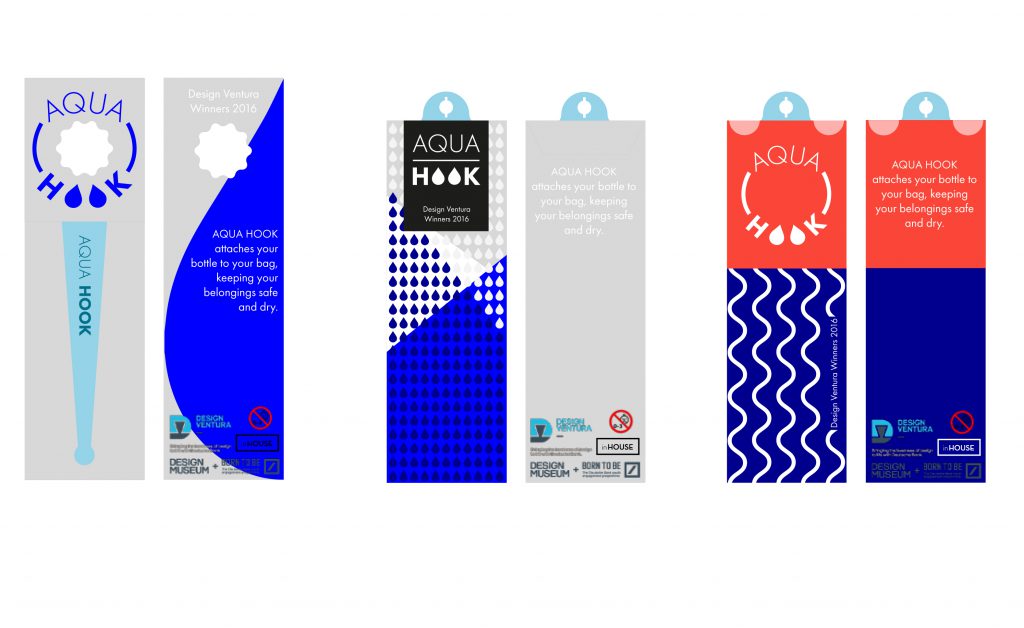
An out come of these meetings was that Aqua Hook was renamed Hook20. The product was assembled and launched at the Design Museum Shop on 10 July 2017.
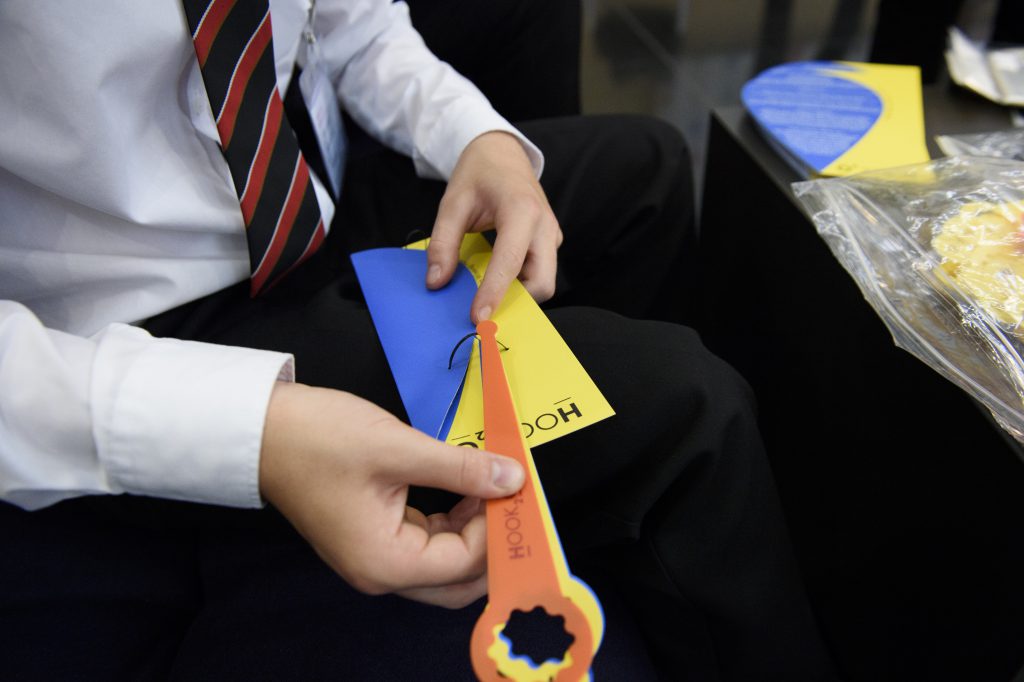
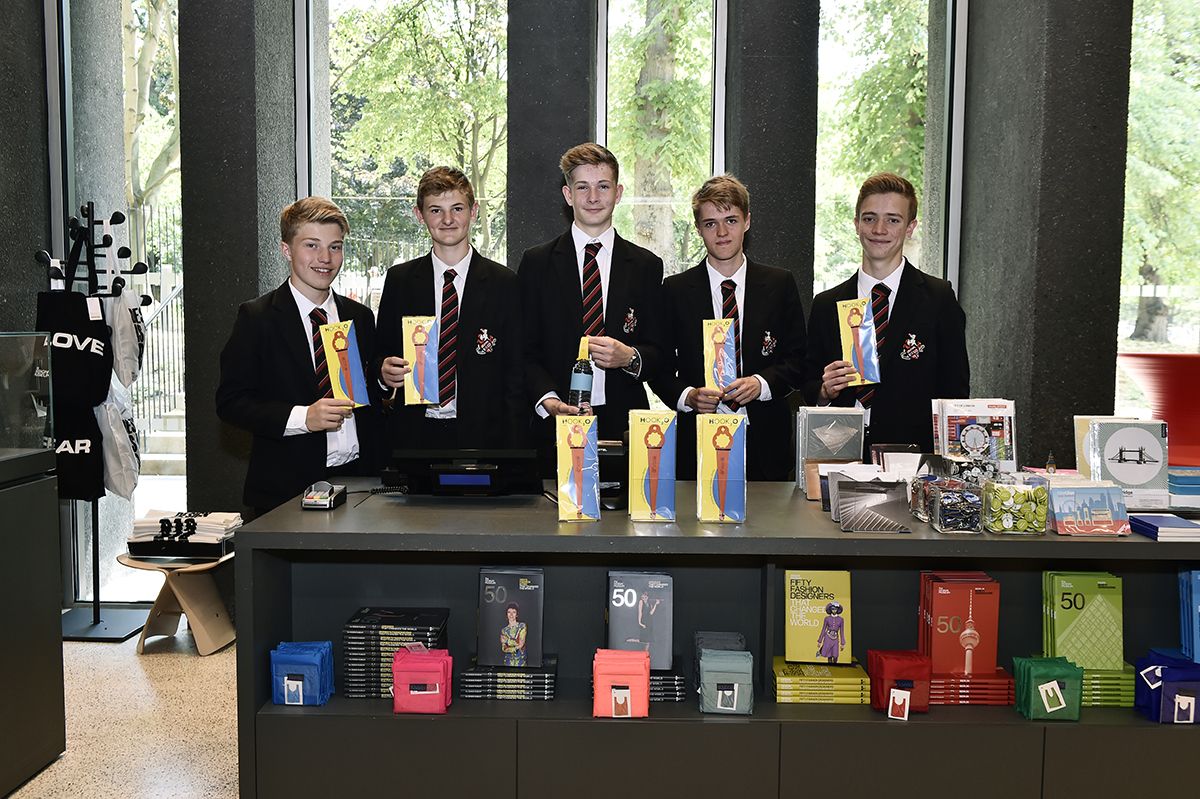
On the launch day, the Harrogate Grammar School team put their sales skills to the test, selling their product at the Deutsche Bank Office.
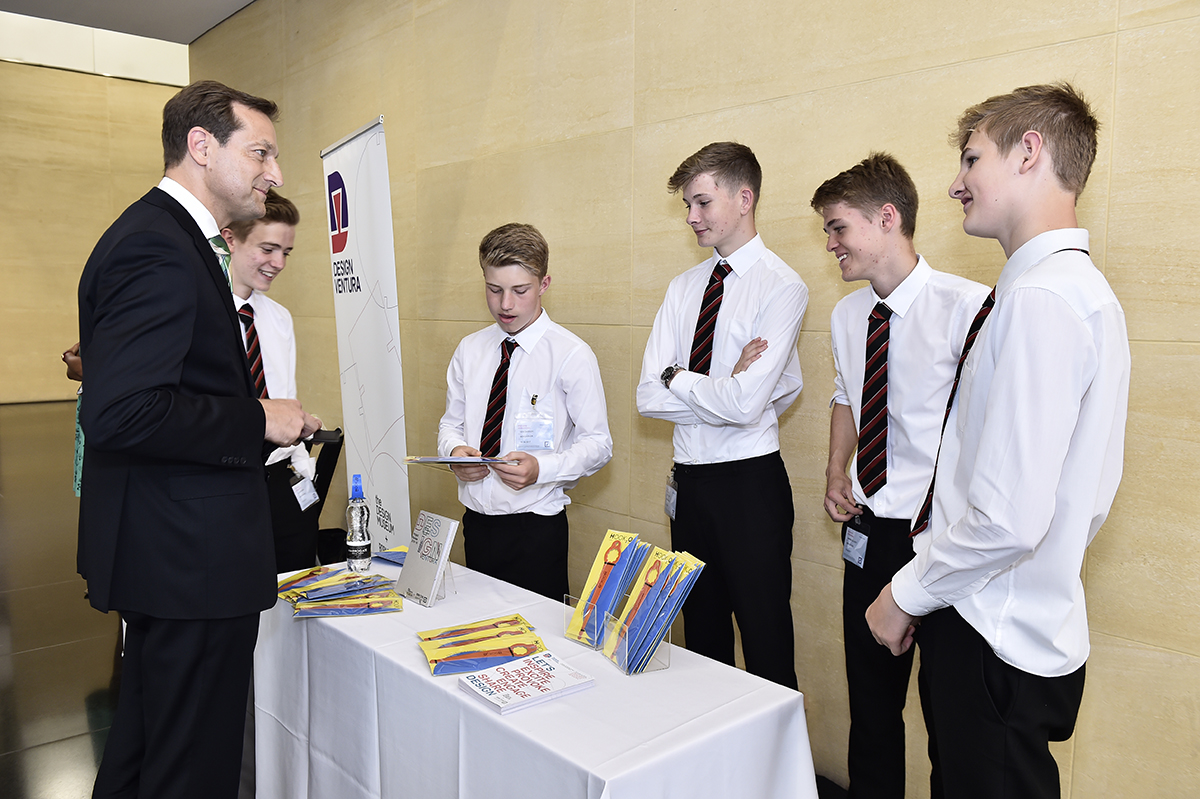
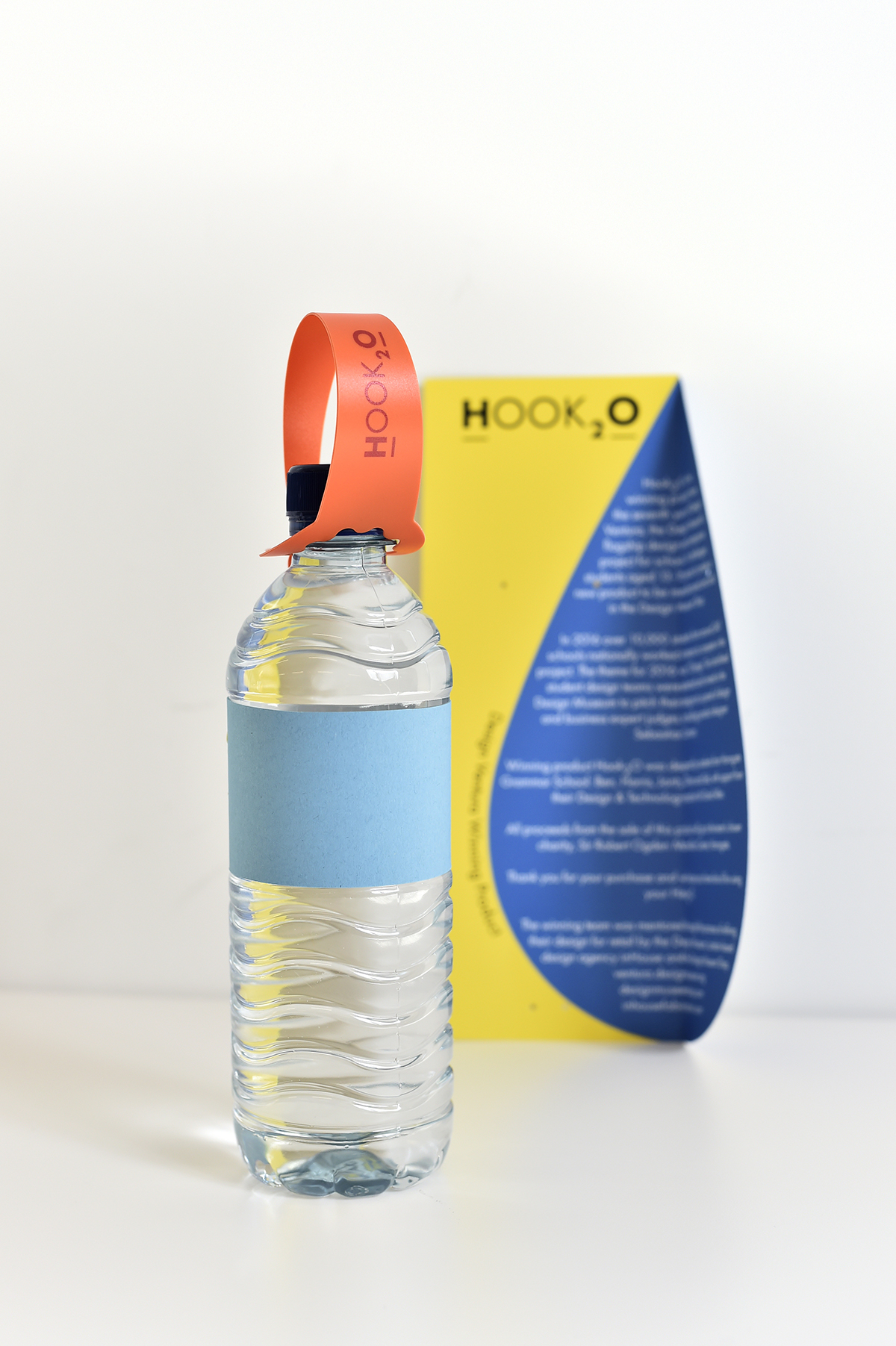
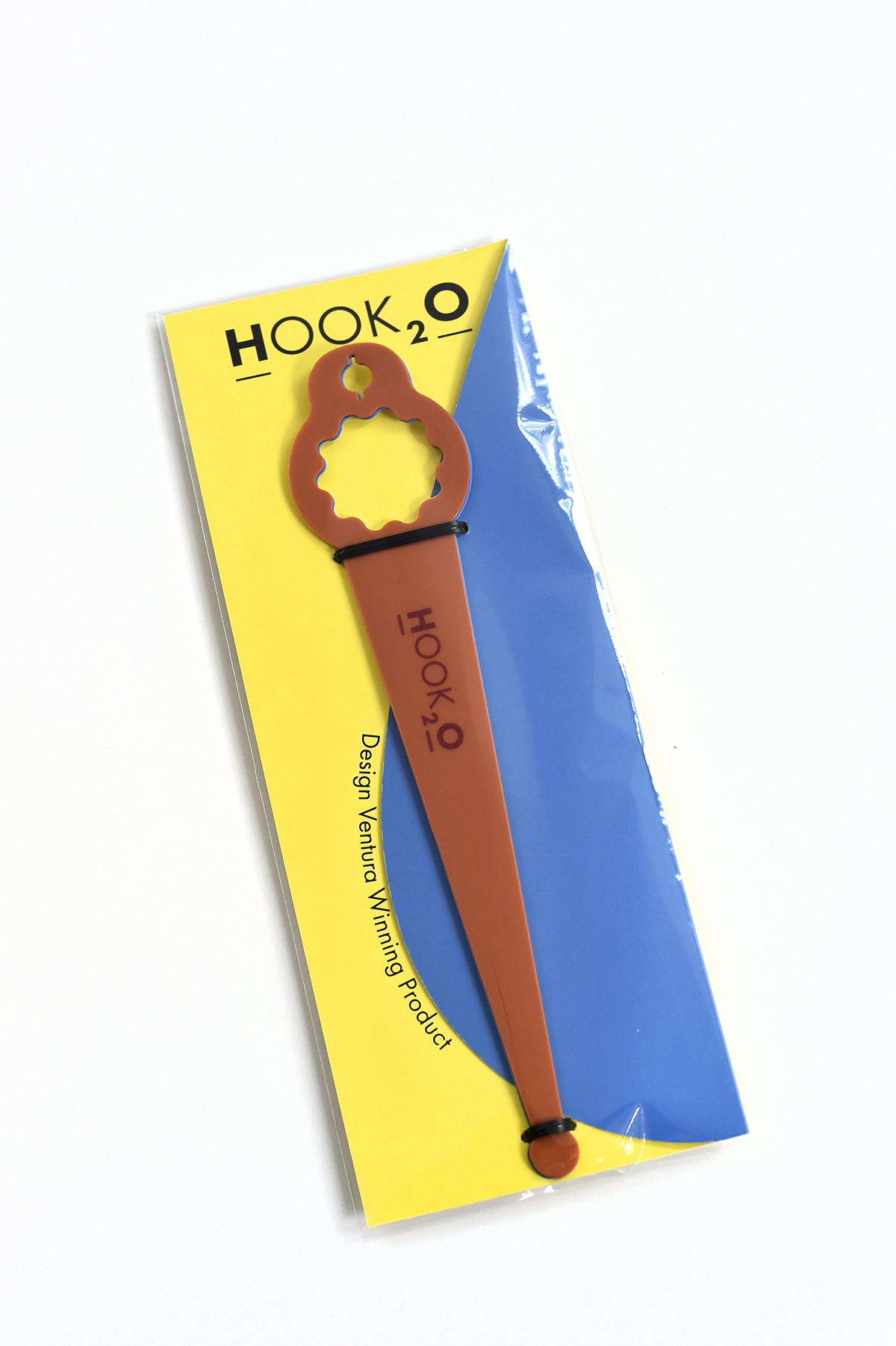
All proceeds from the sale of Hook20 went to the team’s chosen charity, Sir Robert Ogden Macmillan Centre. Harrogate Grammar School proudly presented a cheque for £1,079 to the charity at the Celebration Event 2017.
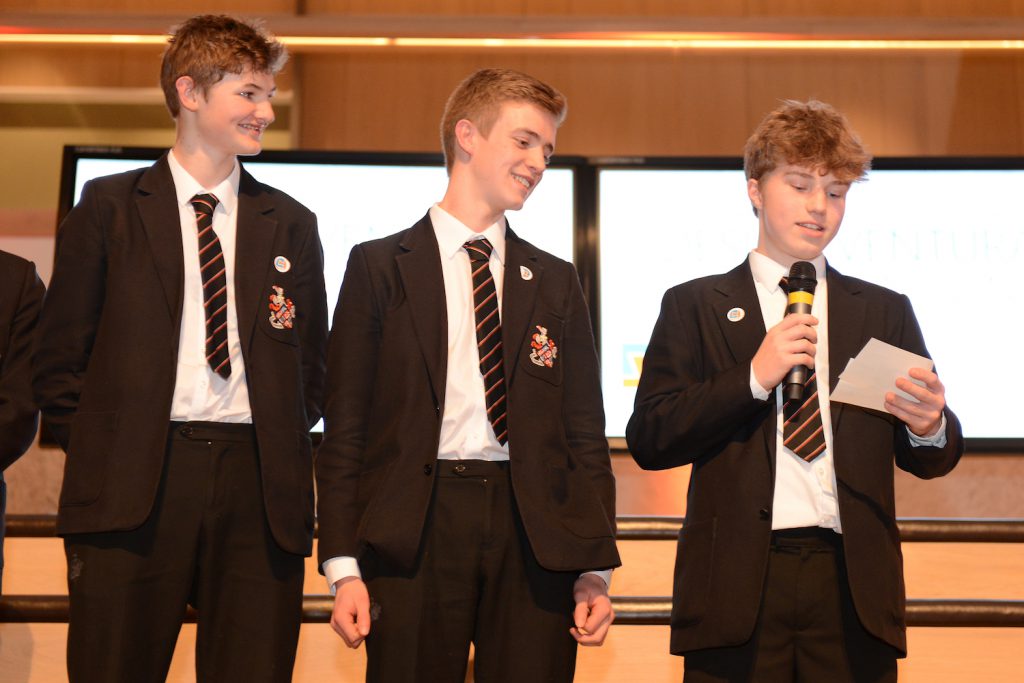
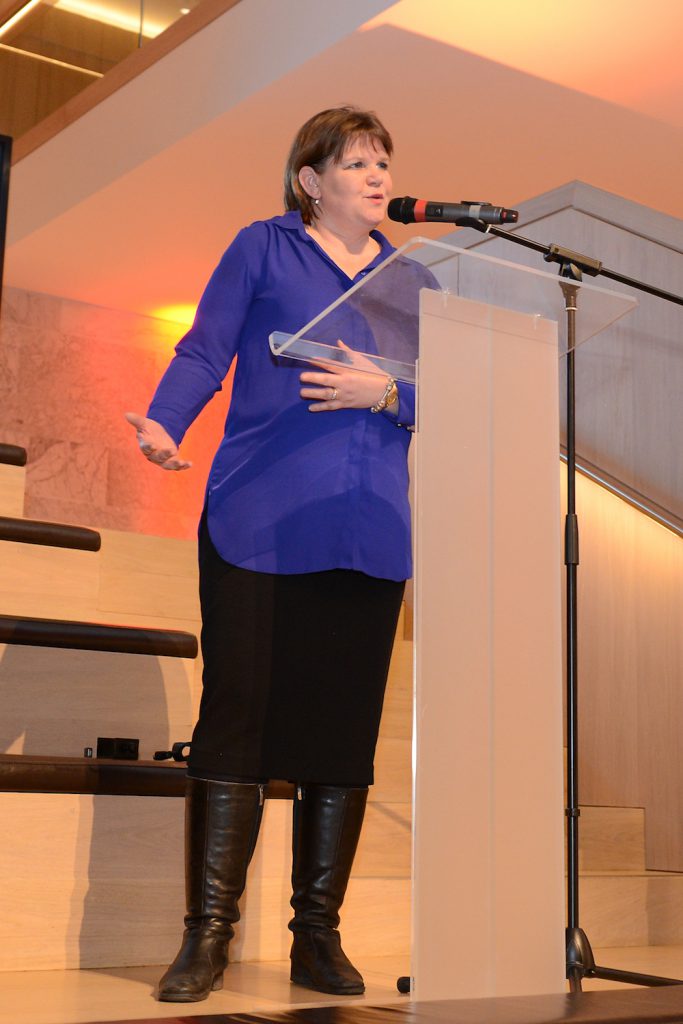
-
Design Ventura Judging Panel 2016
“This year’s Design Ventura Pitch day is on Monday 12 December. This is when our top 10 shortlisted school teams will come to the Design Museum to present their product ideas to our judging panel of design experts.
This year our judges are:

ALICE BLACK
Alice is Director of the Design Museum. As well as developing audiences, exhibitions and programming over the last eight years, Alice has led the museum’s project to transform the former Commonwealth Institute into the new home for the Design Museum.Alice began her career in banking in New York and her experience in the UK spans work in the public and private sector, in large, multi-site national museums as well as independent museums.

ASIF KHAN
Asif Khan’s London-based architecture practice was founded in 2007. Works range from cultural buildings and masterplans to houses, temporary pavilions, exhibitions, installations and products.Asif was a Designer in Residence in 2010 at the Design Museum and was awarded Designer of the Future at Design and has been a Design Museum trustee since 2015.

CHRIS RUSE
Chris is Director of Capital Markets & Treasury Solutions at Deutsche Bank and has supported the project since the first year of Design Ventura, including being on our first judging panel 5 years ago.Chris’s involvement is part of the Born to Be, Deutsche Bank’s youth engagement programme.

MICHAEL SKAPINKER
Michael Skapinker is an FT associate editor. His column on Business and Society appears on Thursdays. Born in South Africa, he began his journalistic career in Greece and joined the FT in London in 1986. He received the Work Foundation Members’ Award for his contribution to the understanding of working life in 2003.
SEBASTIAN CONRAN
Sebastian studied Industrial Design Engineering at Central St. Martins, where he gave the Sex Pistols their first booking and designed the record sleeves and posters for The Clash. After working at corporate identity consultancy Wolff Olins and leading hard-goods development at Mothercare, he founded Sebastian Conran Associates design studio in 1986, which he continues to lead.Sebastian has taught furniture design at the Royal College of Art, lectures frequently and judges many international design awards.”
-
Design Ventura Pitching Day 2016
The Ventura Team were very impressed on Monday when our top ten schools came in to pitch their products to our panel of judges. Everyone looked smart and had sent in their presentations before the day, so there was time for all the teams to have a short run-through of their pitches and to get some feedback from our volunteers.
The judges; Alice Black, Asif Khan, Chris Ruse, Michael Skapinker and Sebastian Conran had a tough job choosing which teams to award prizes to, but they have reached a decision and all the prize winners will be revealed at the Celebration Event in February.

Our judges (left to right) Asif Khan, Alice Black, Chris Ruse, Sebastian Conran and Michael Skapinker.

Our top ten teams in the auditorium before the pitches begin.

The judges deliberating over the top ten ideas.

The day ended on a very hands on activity – redesigning an Ikea lamp.



